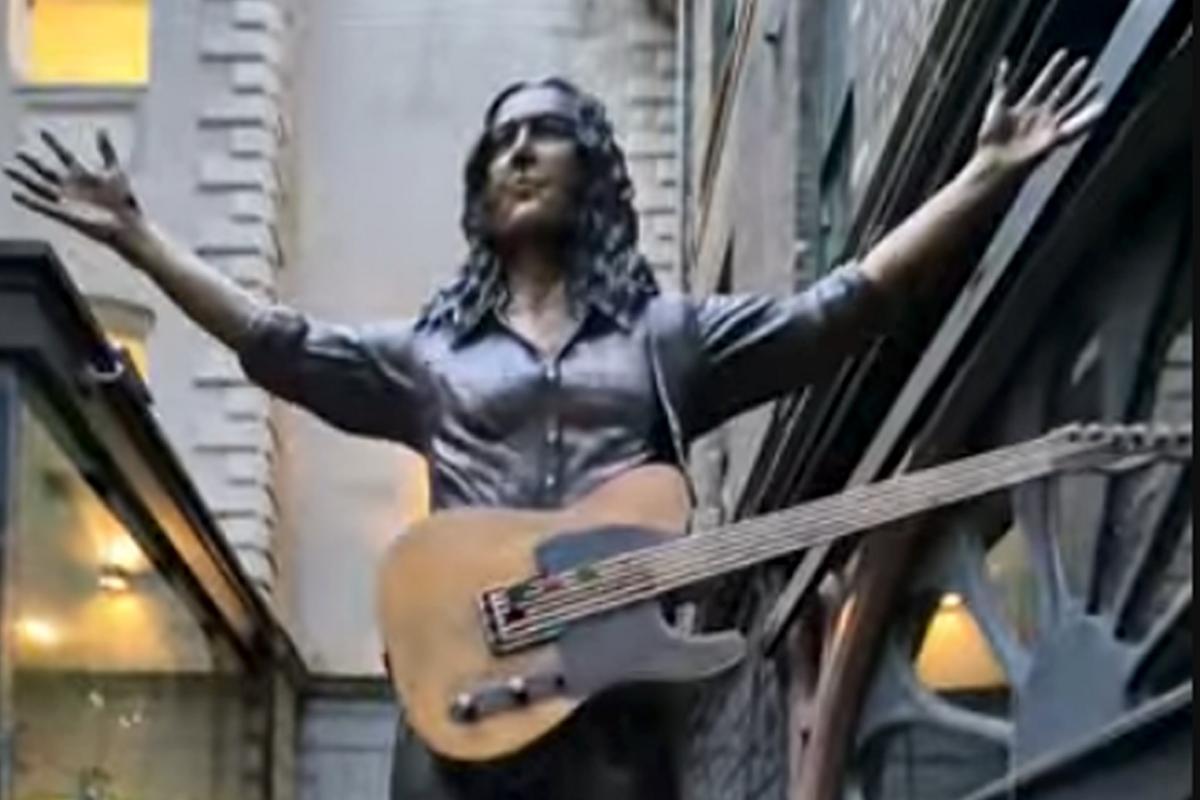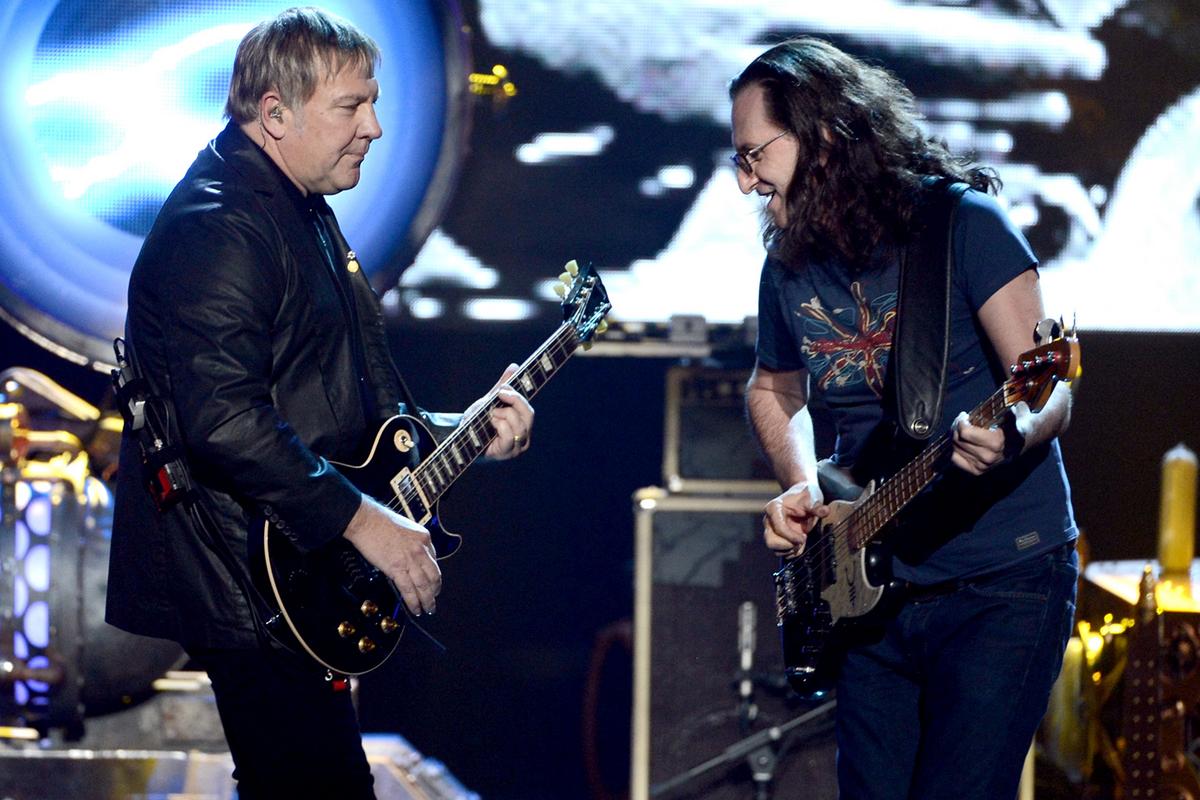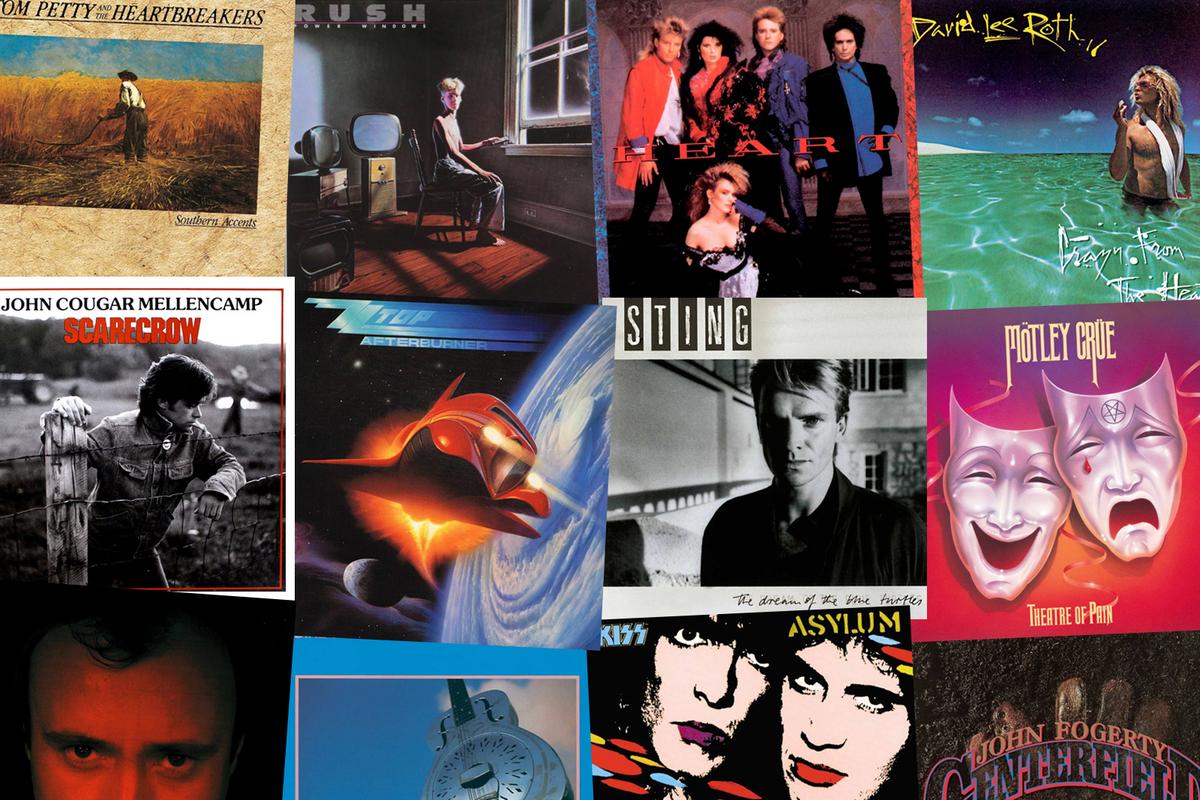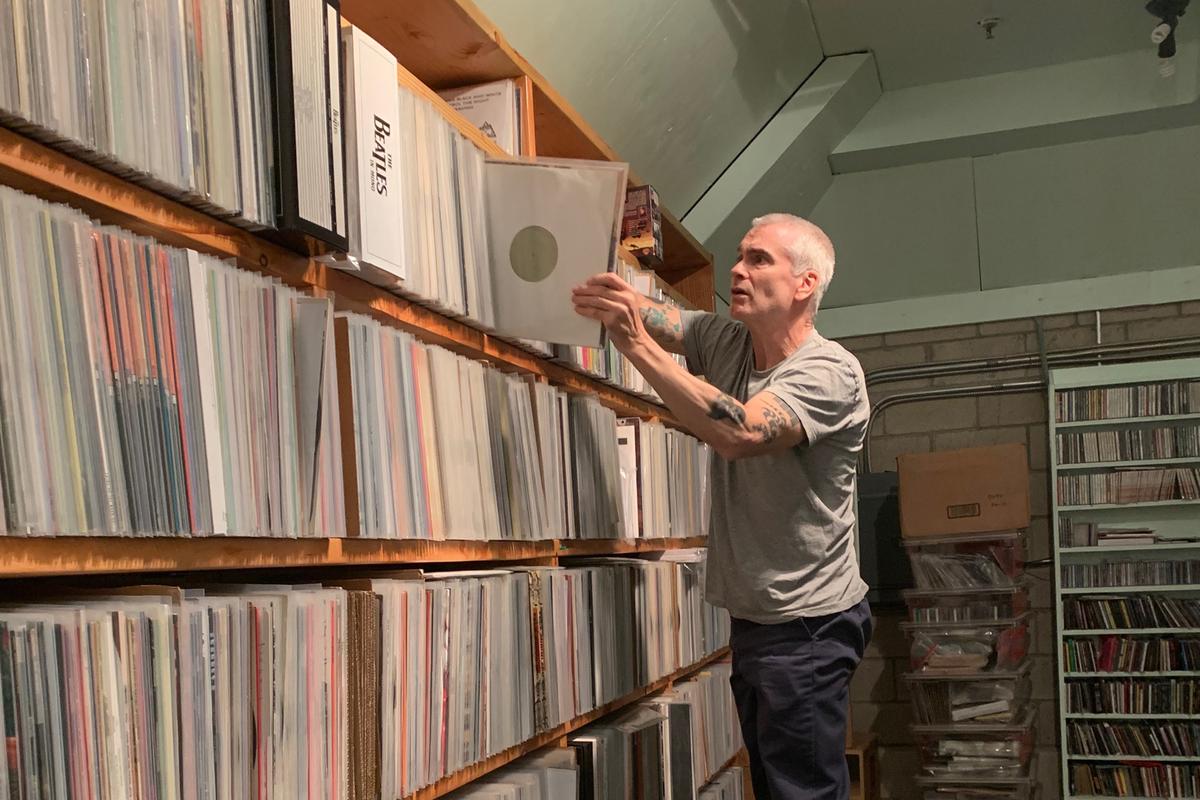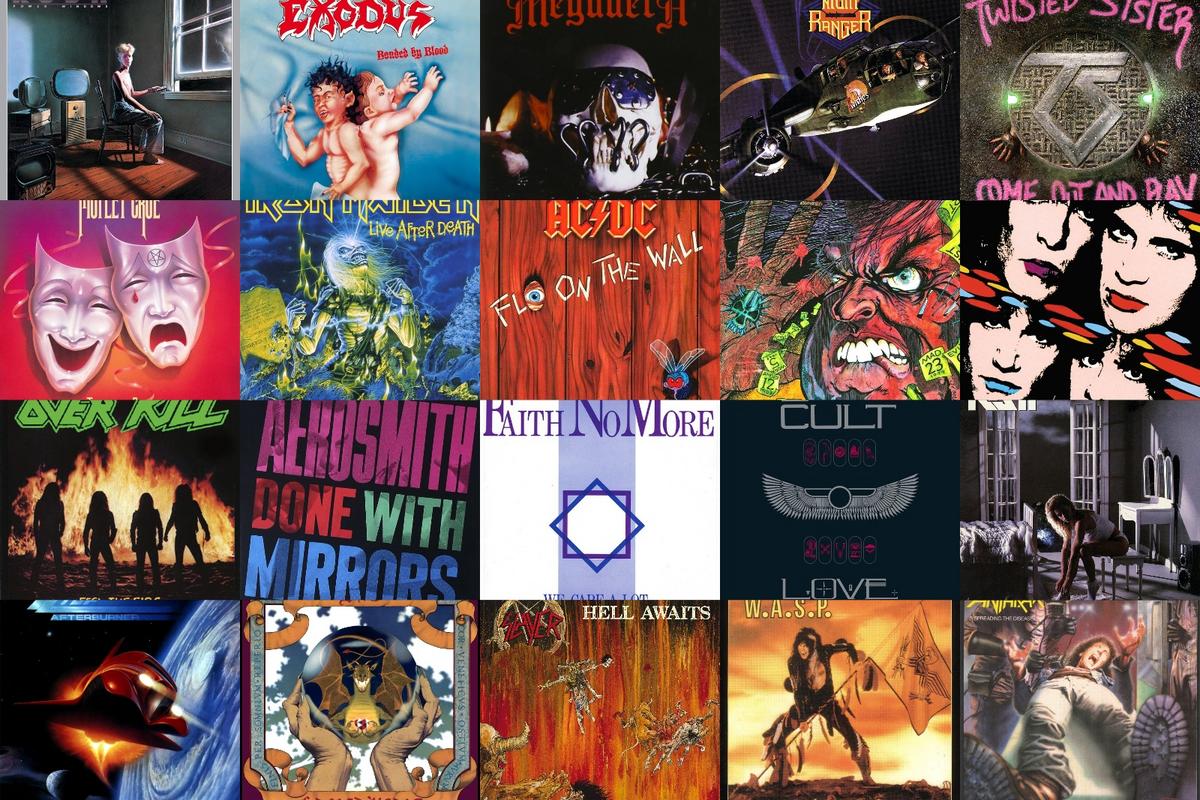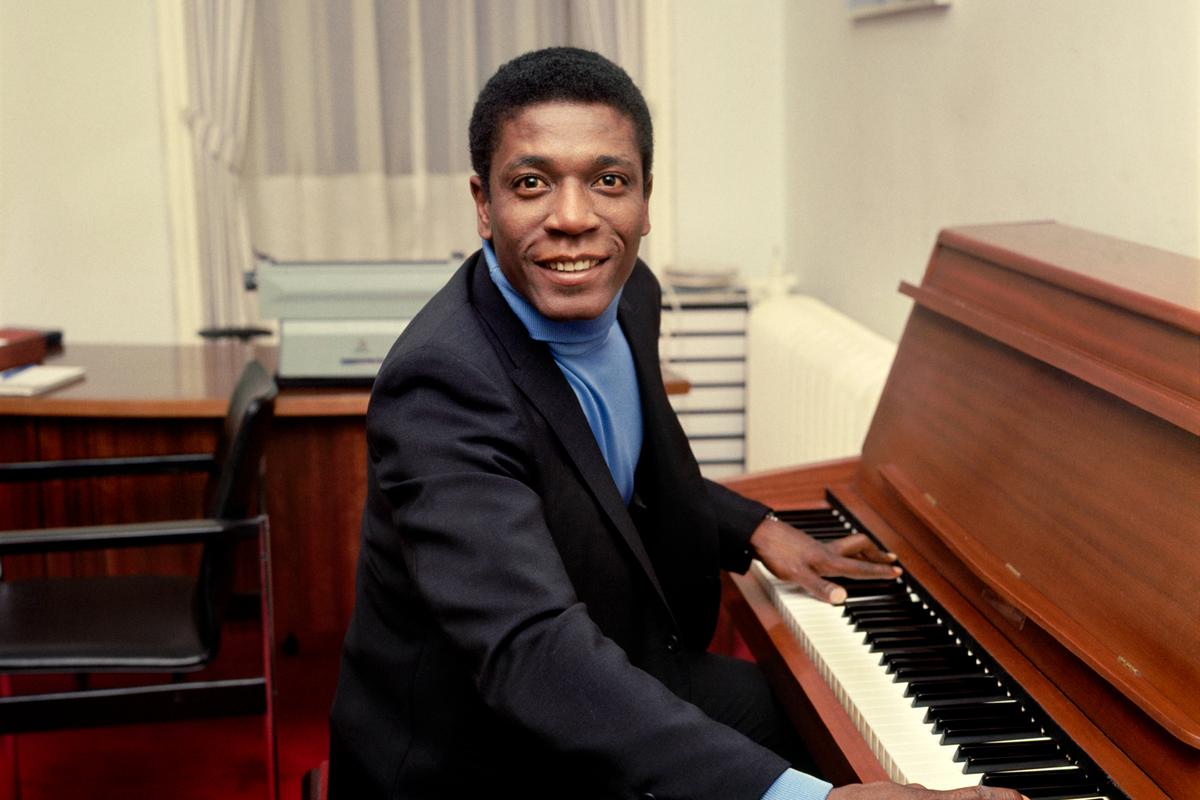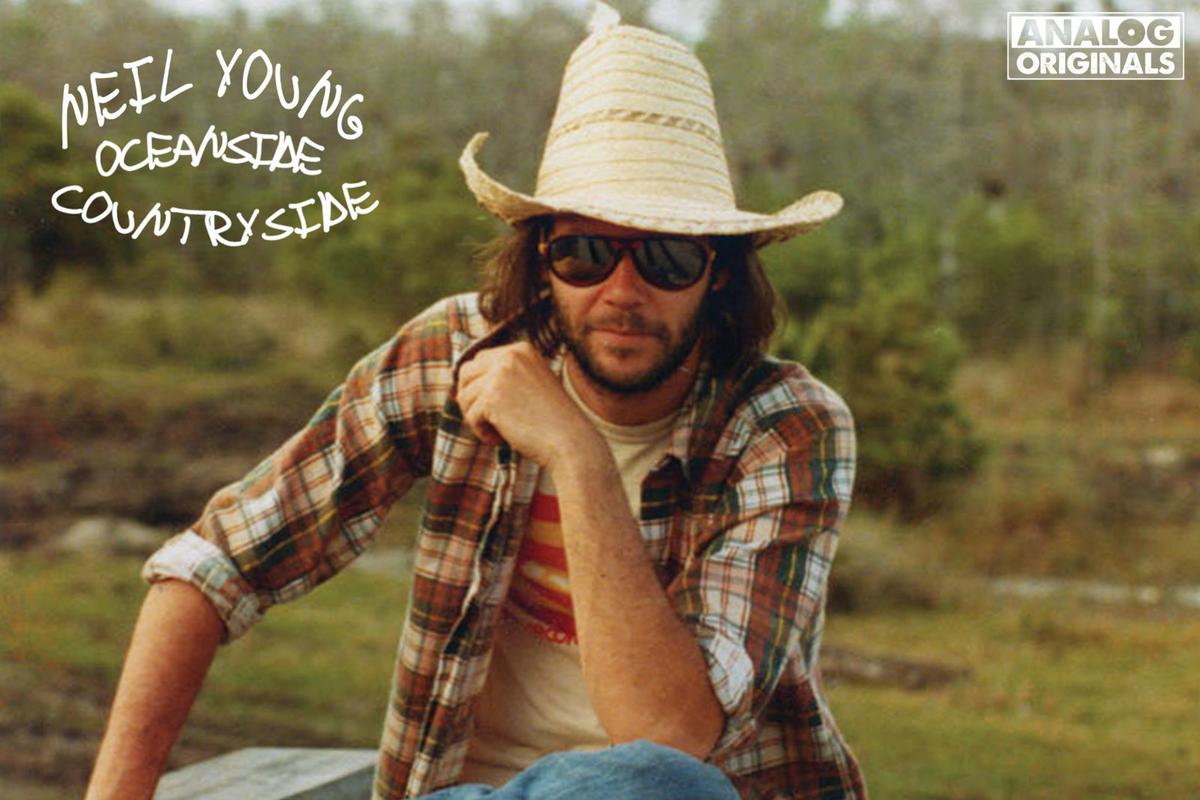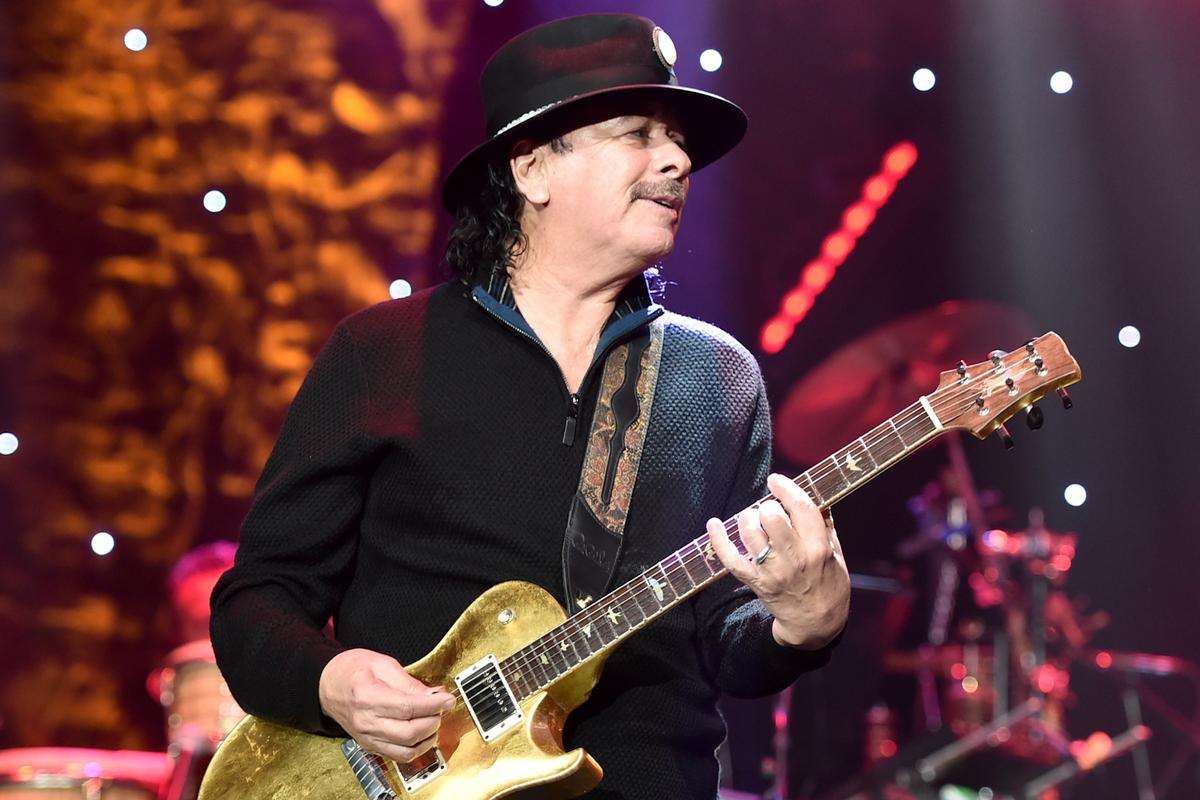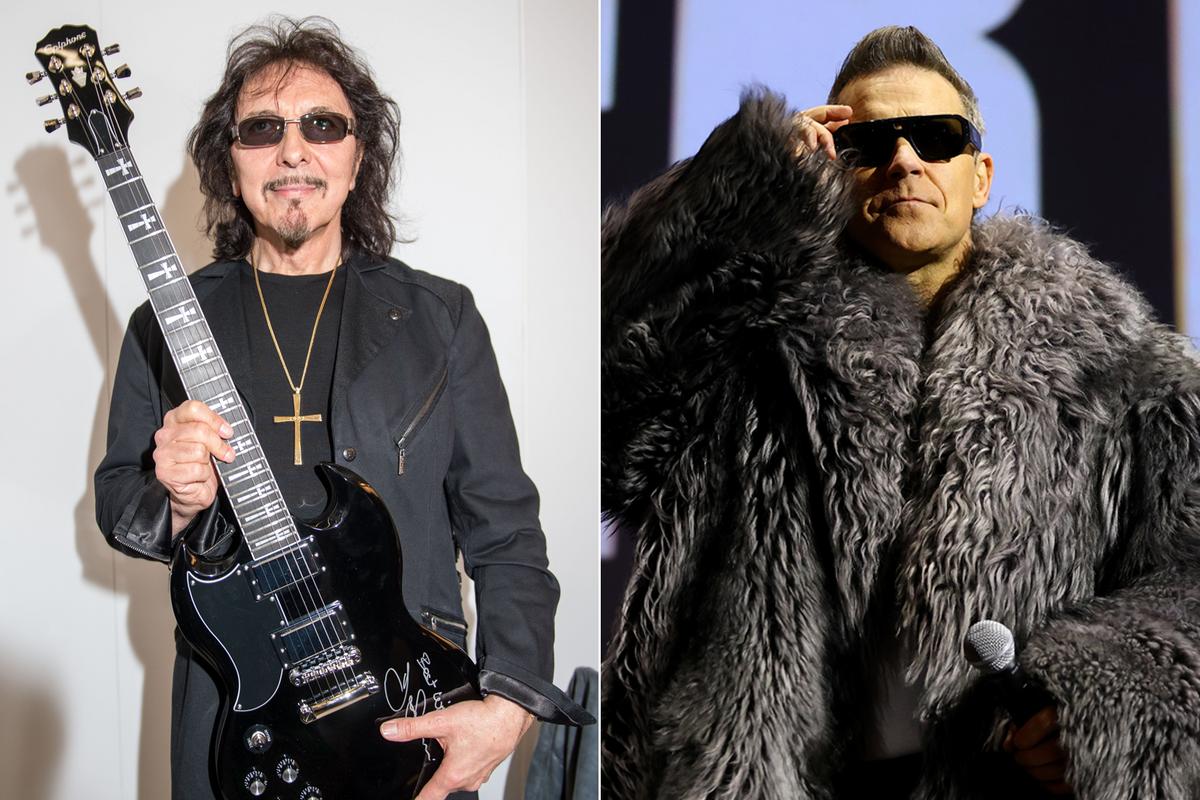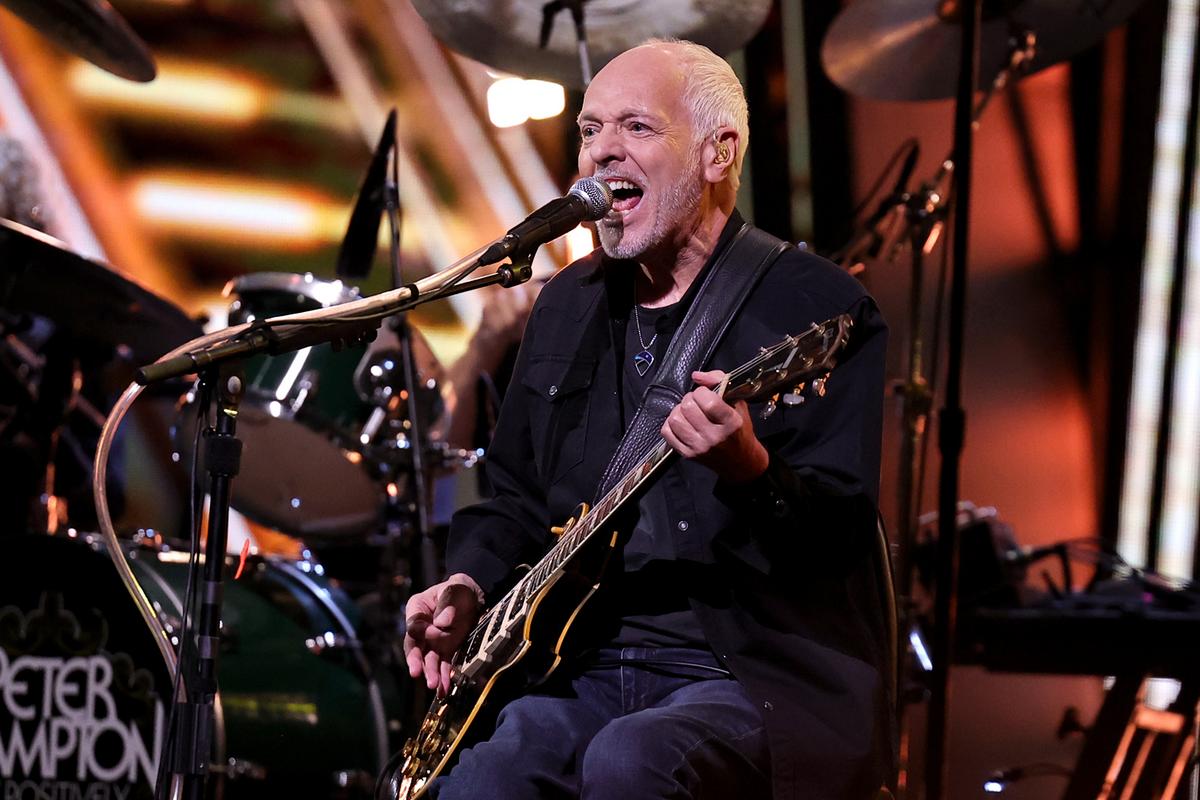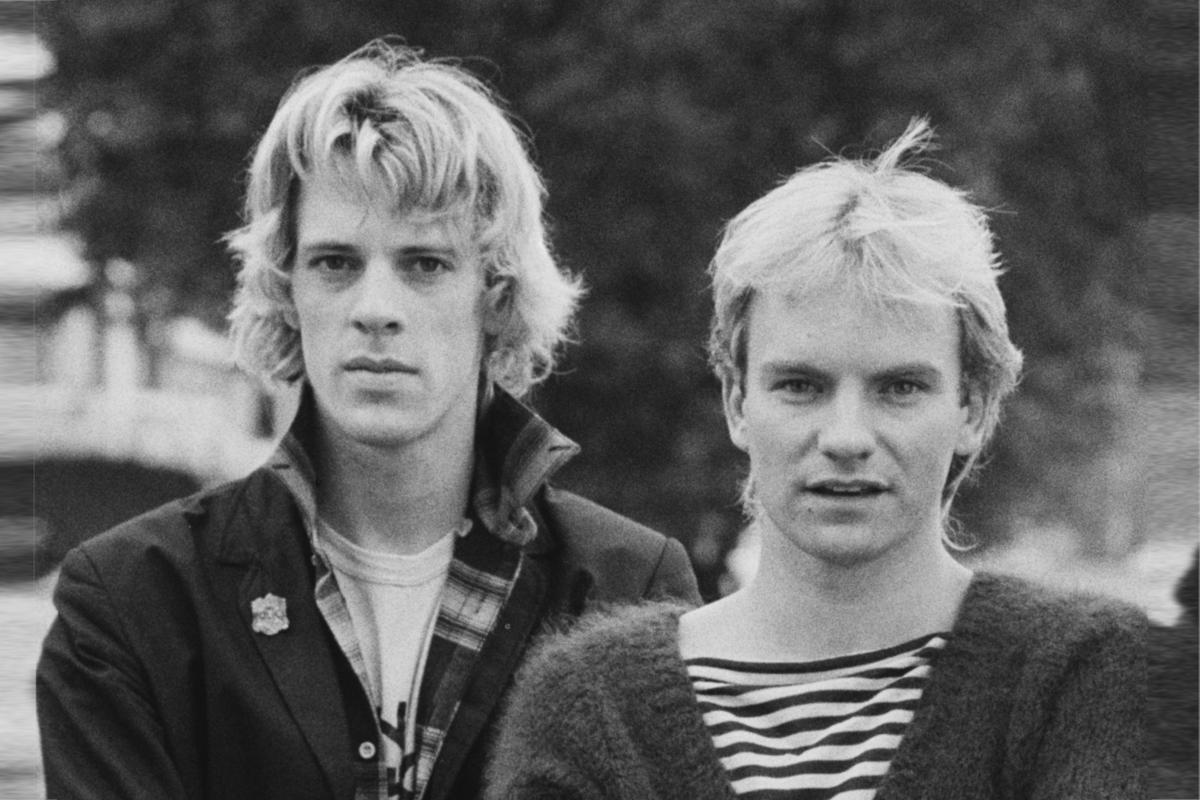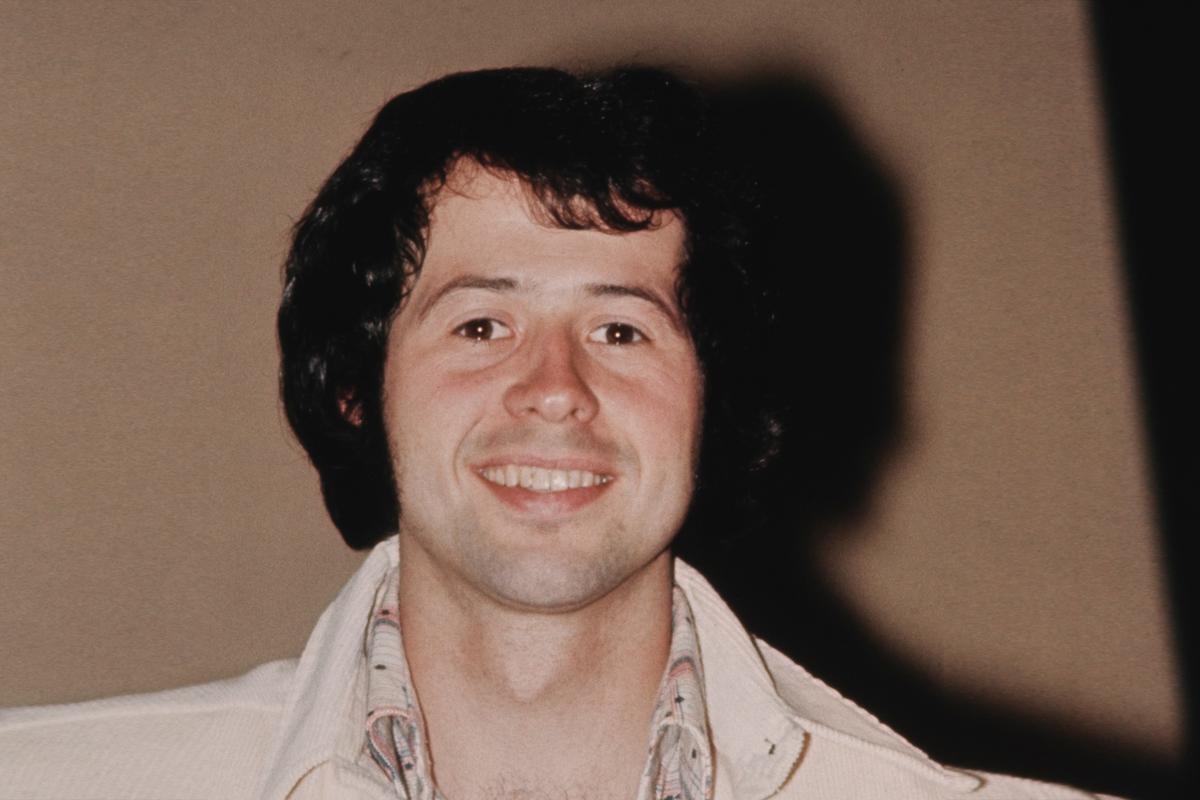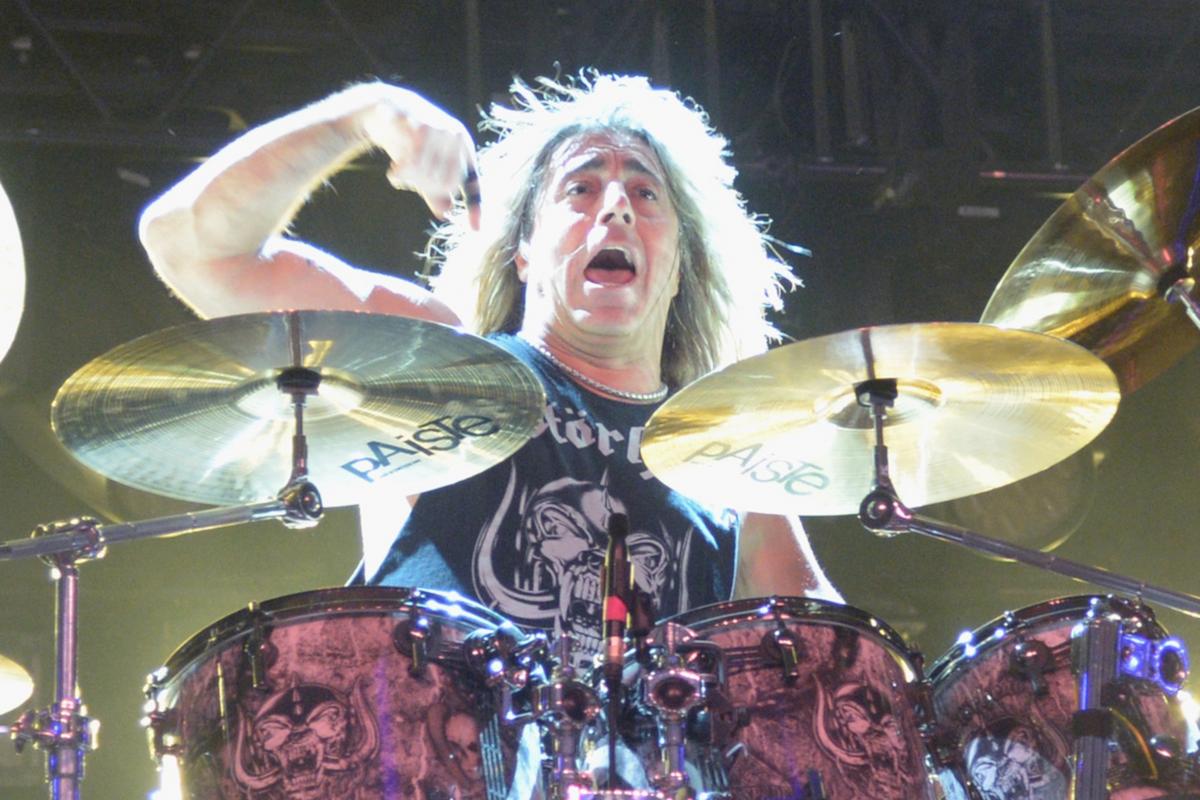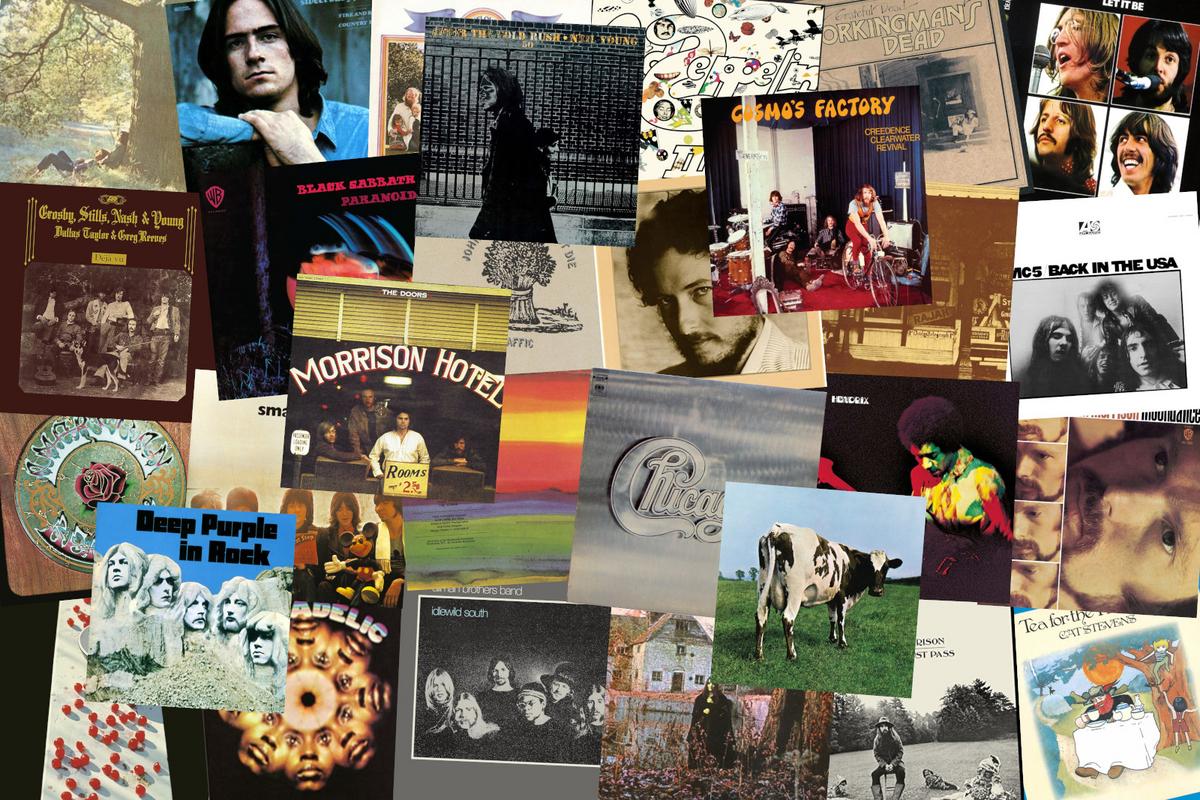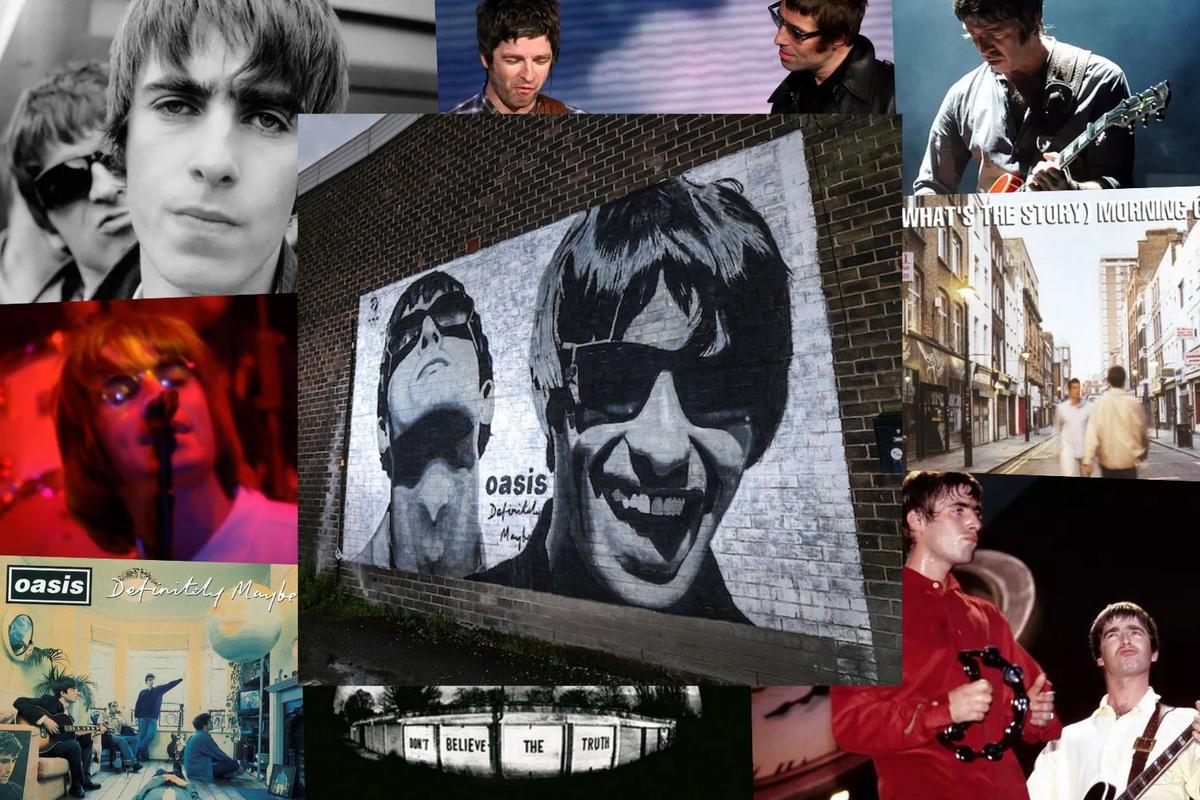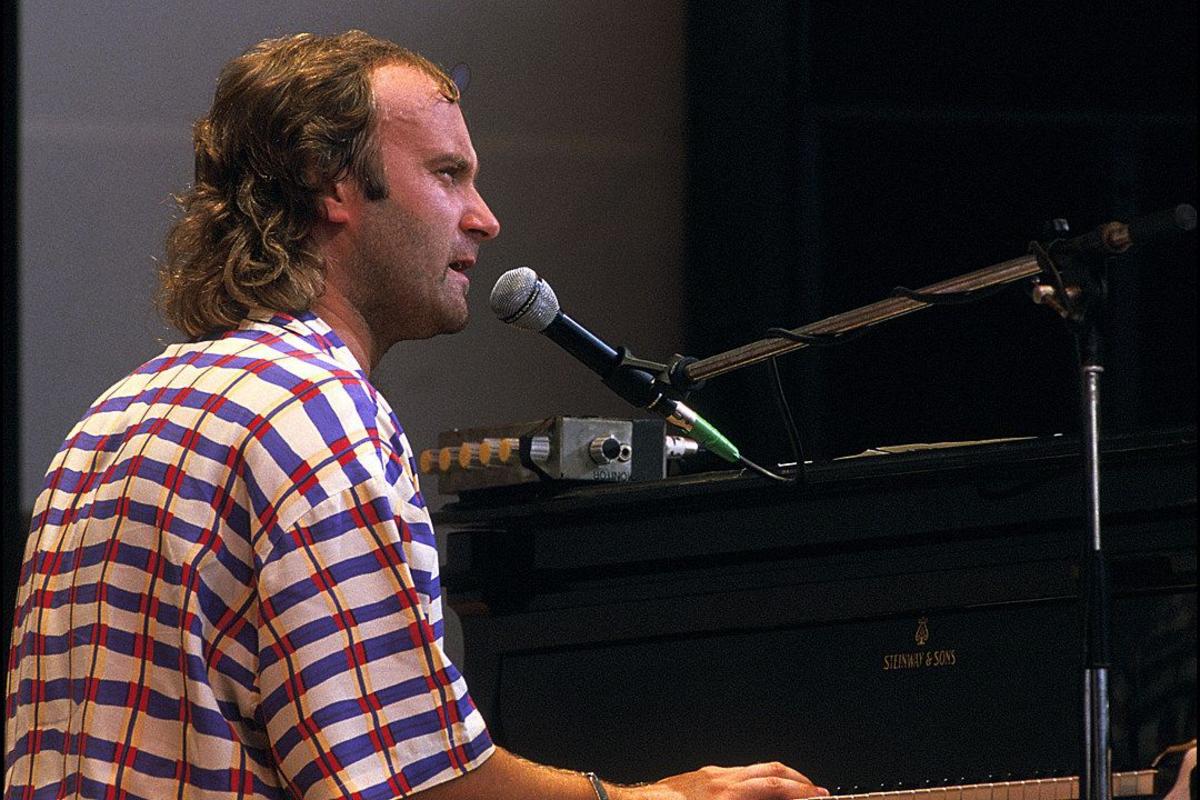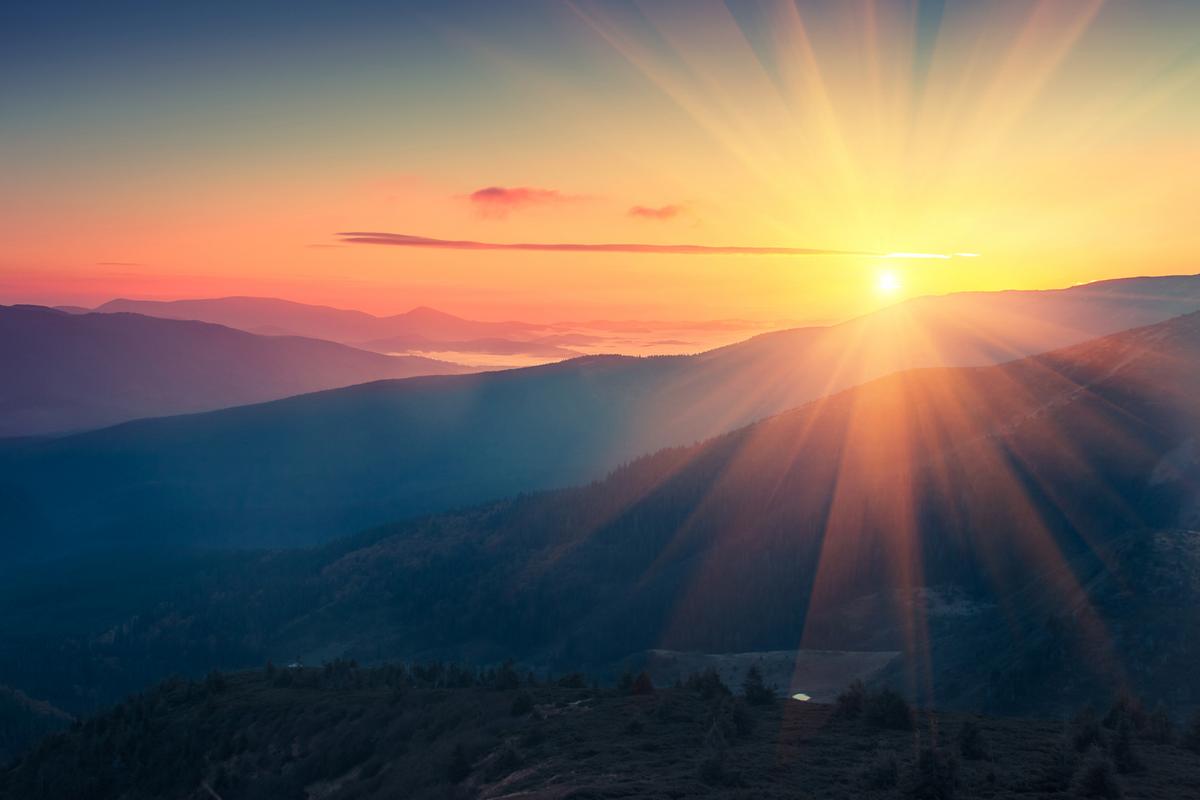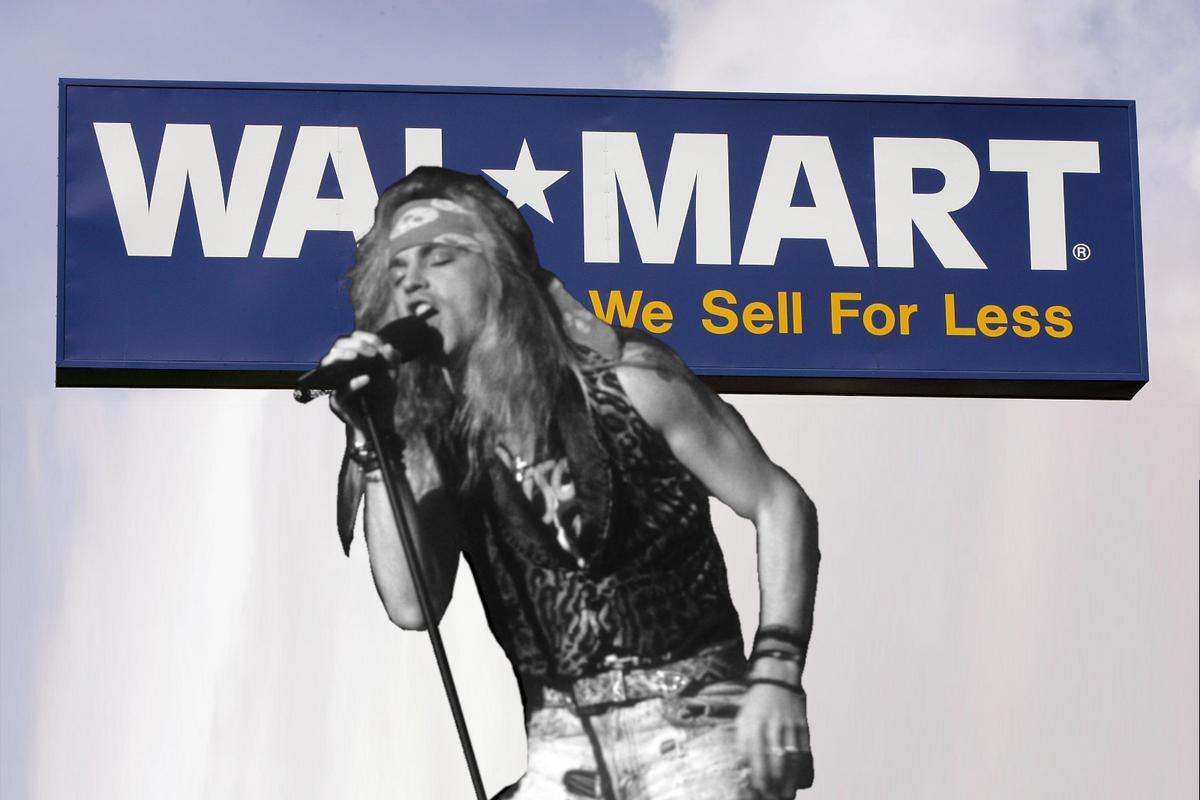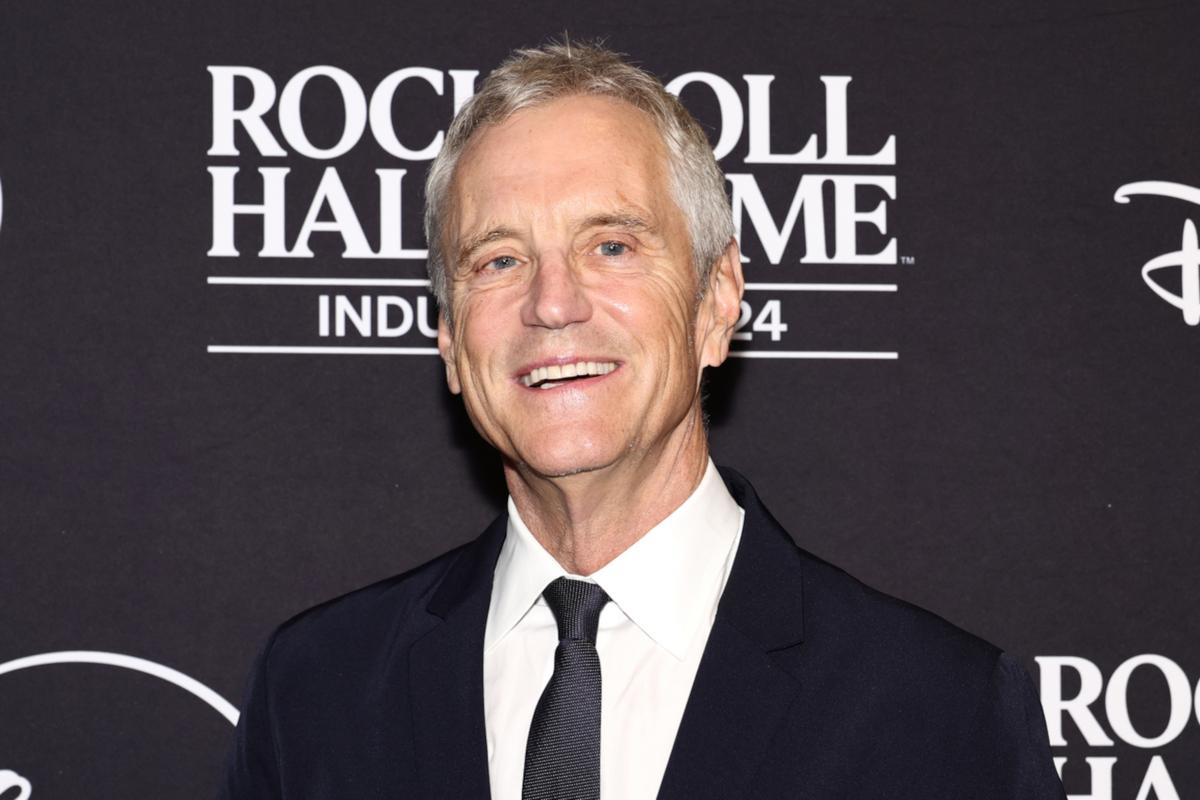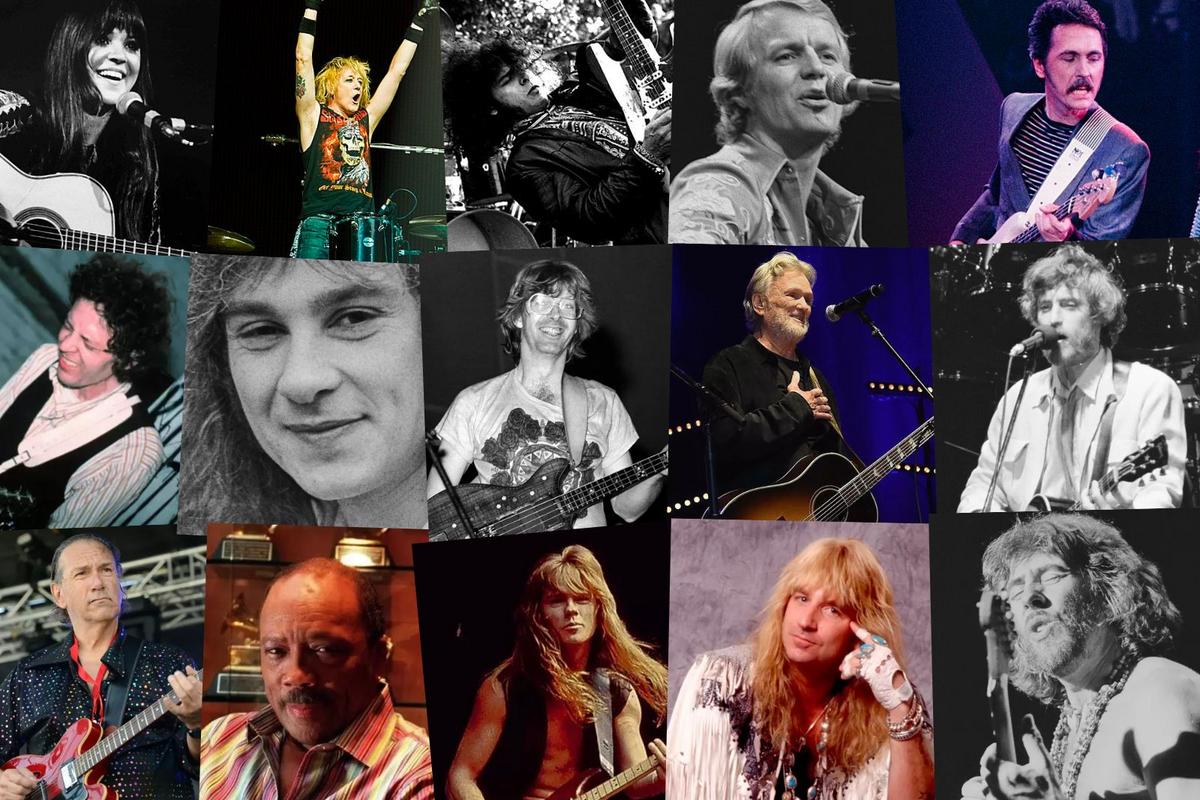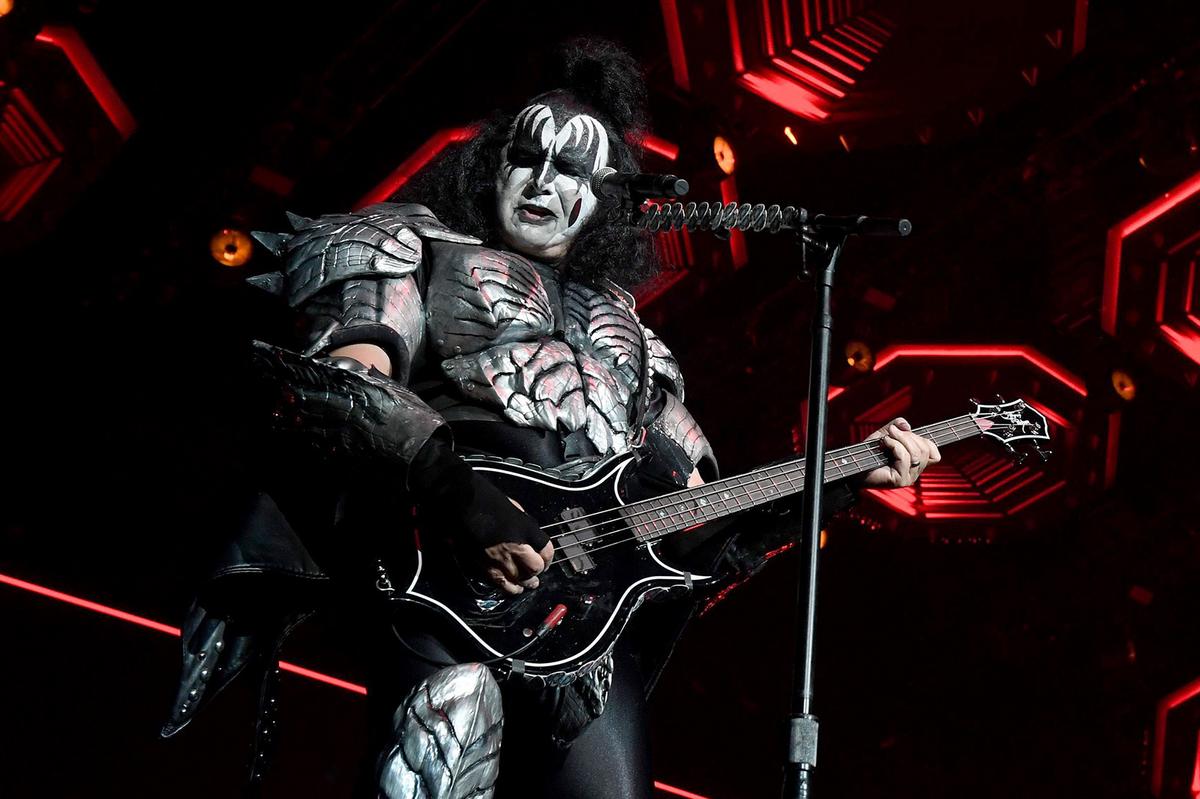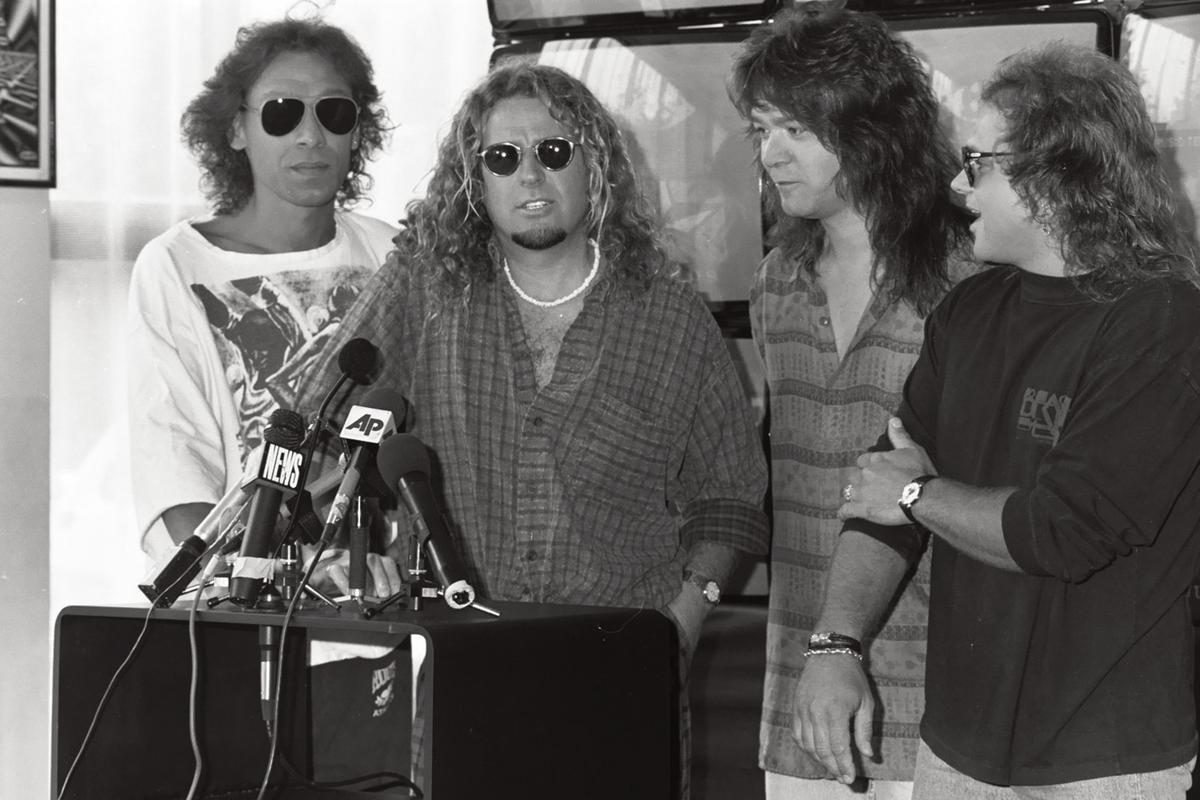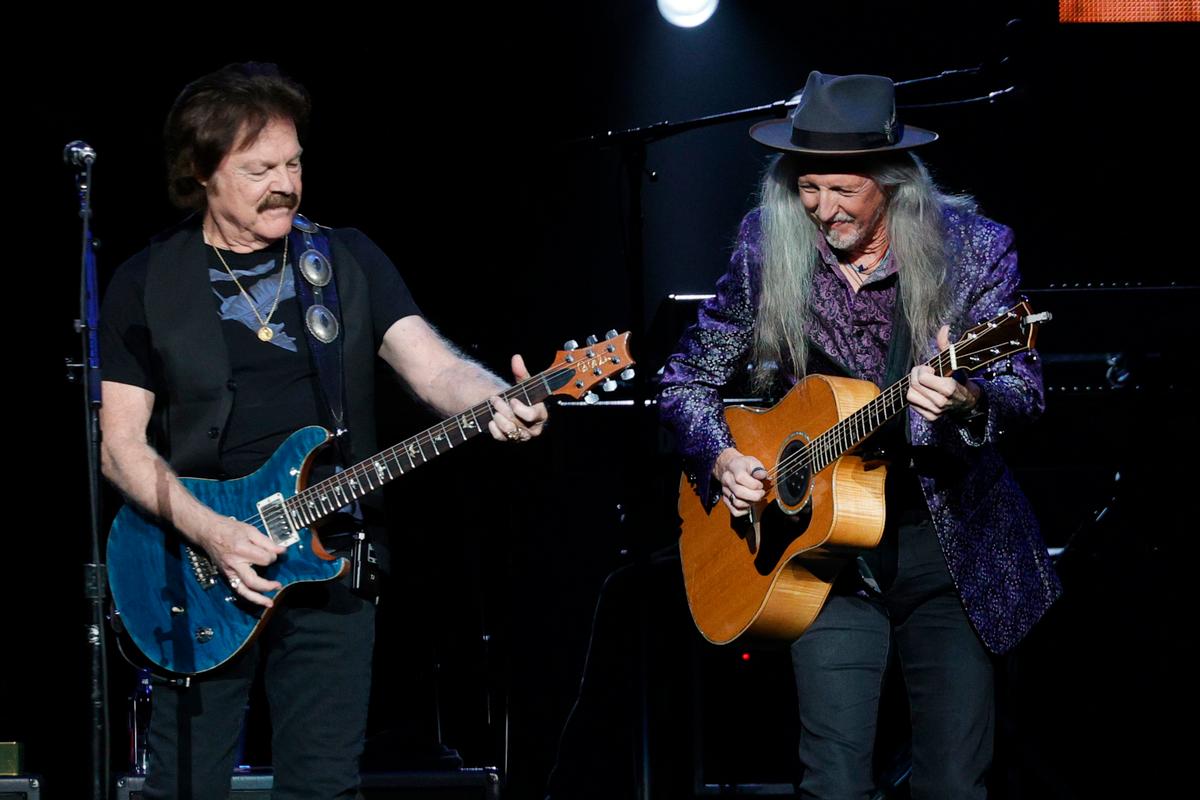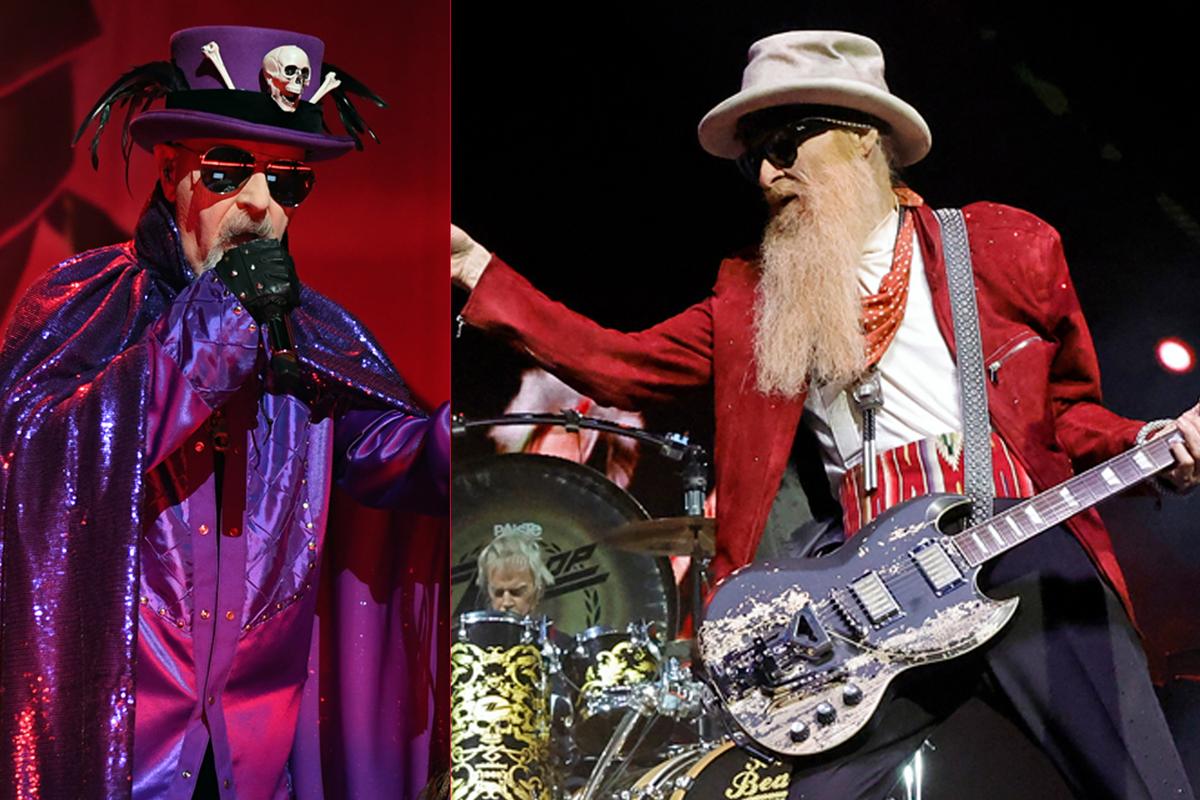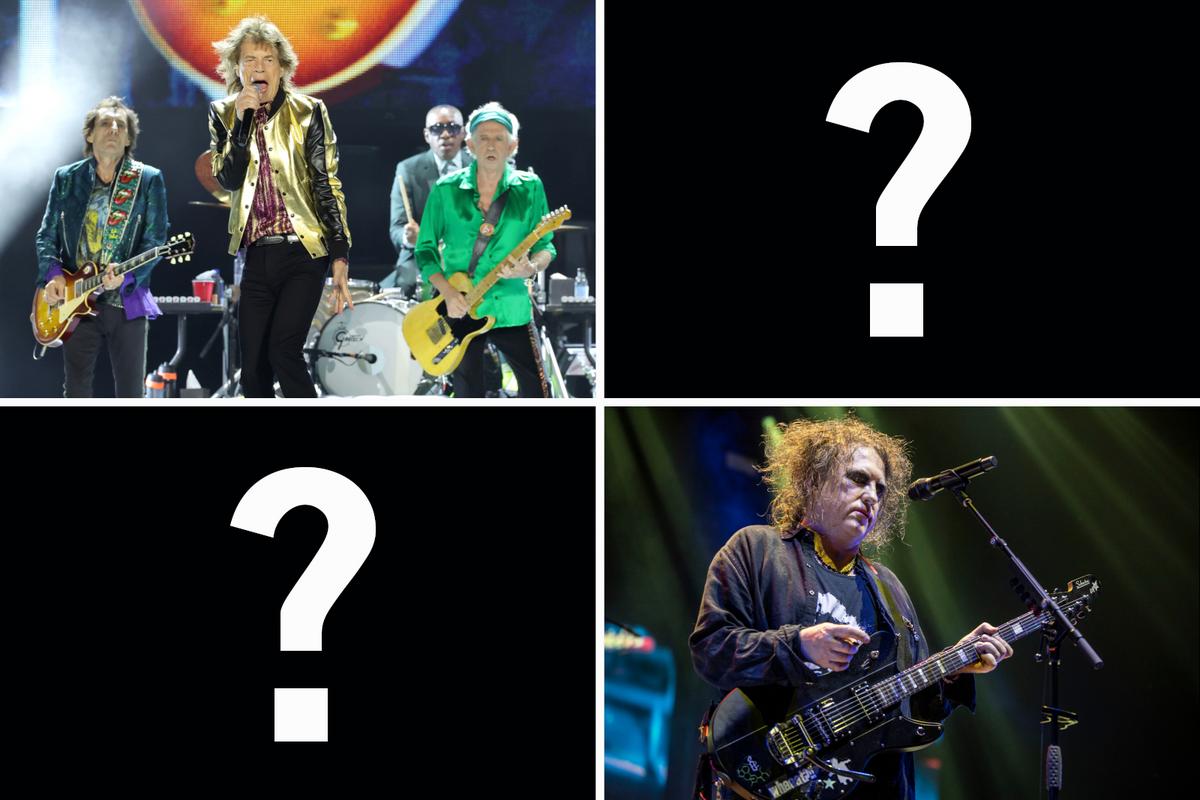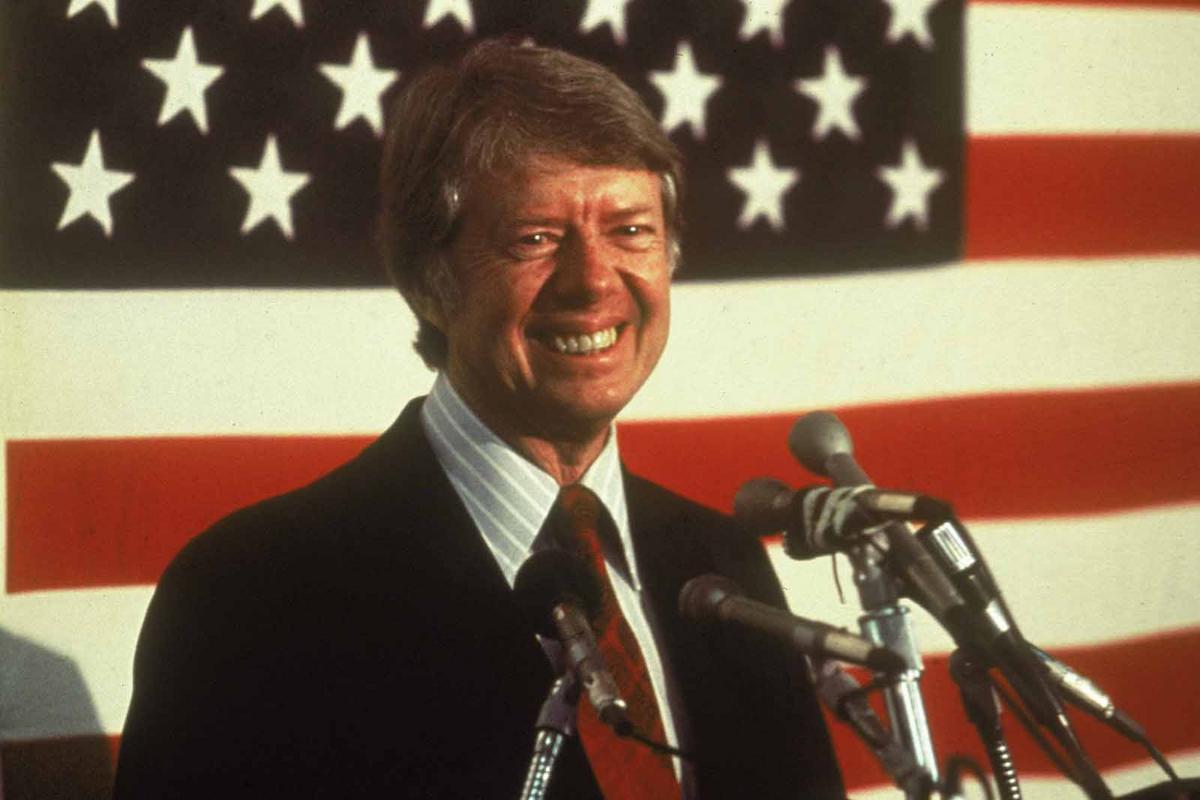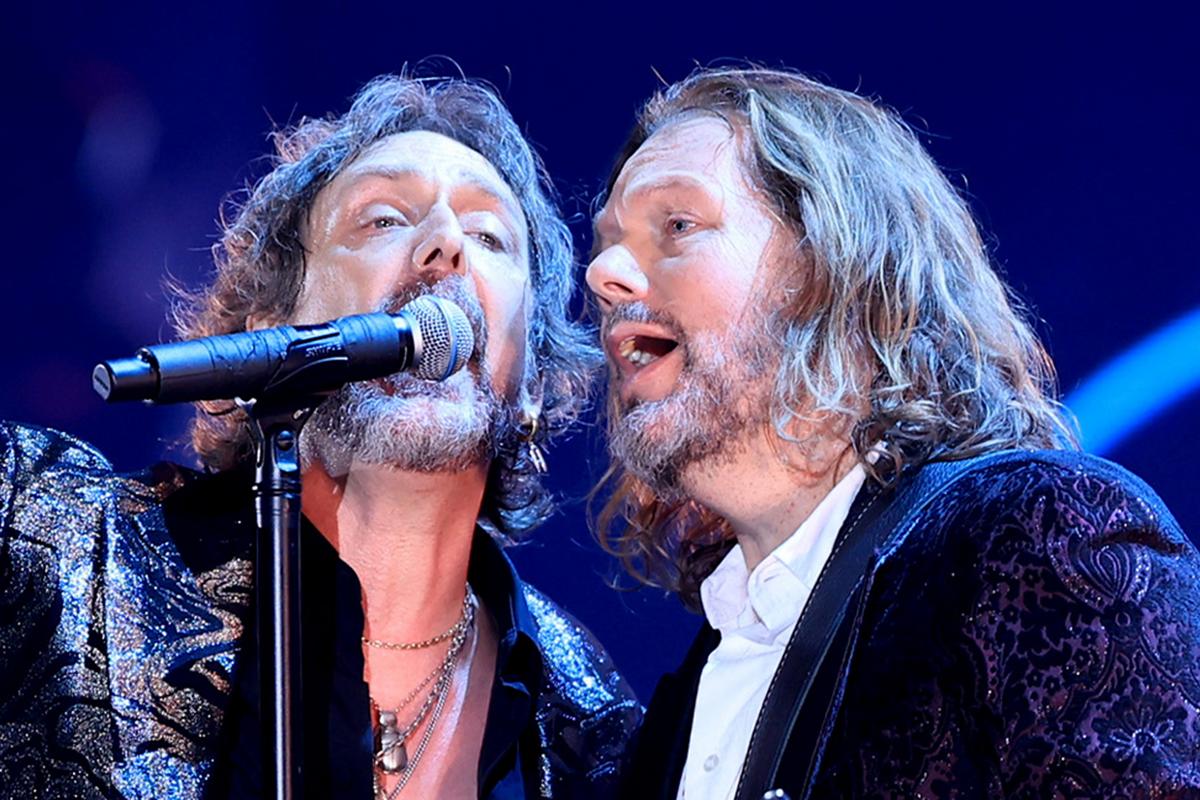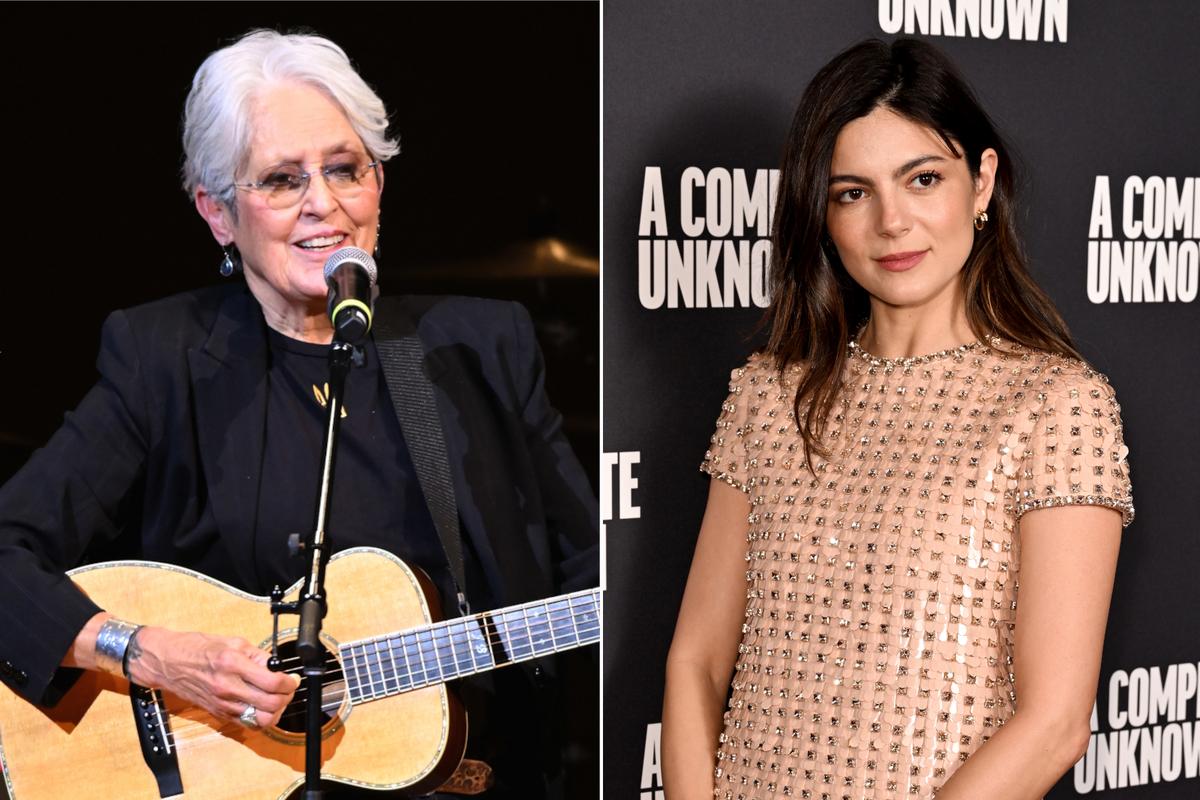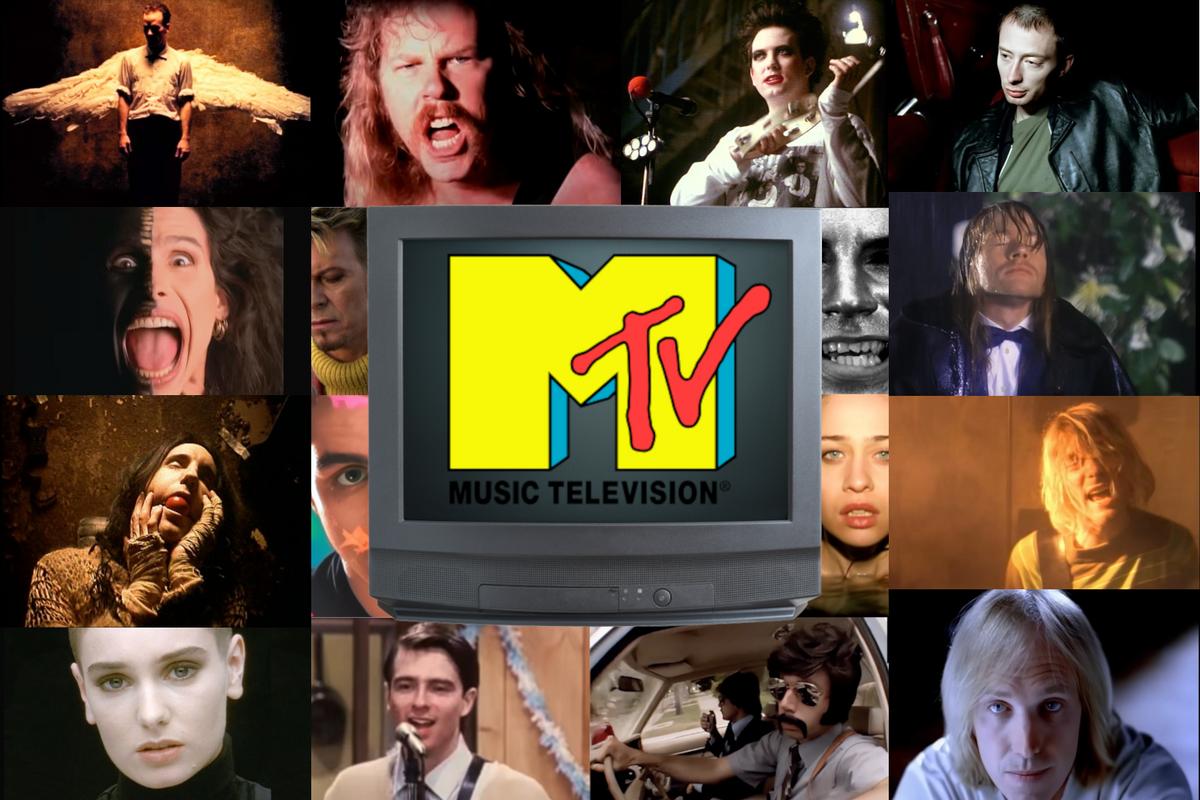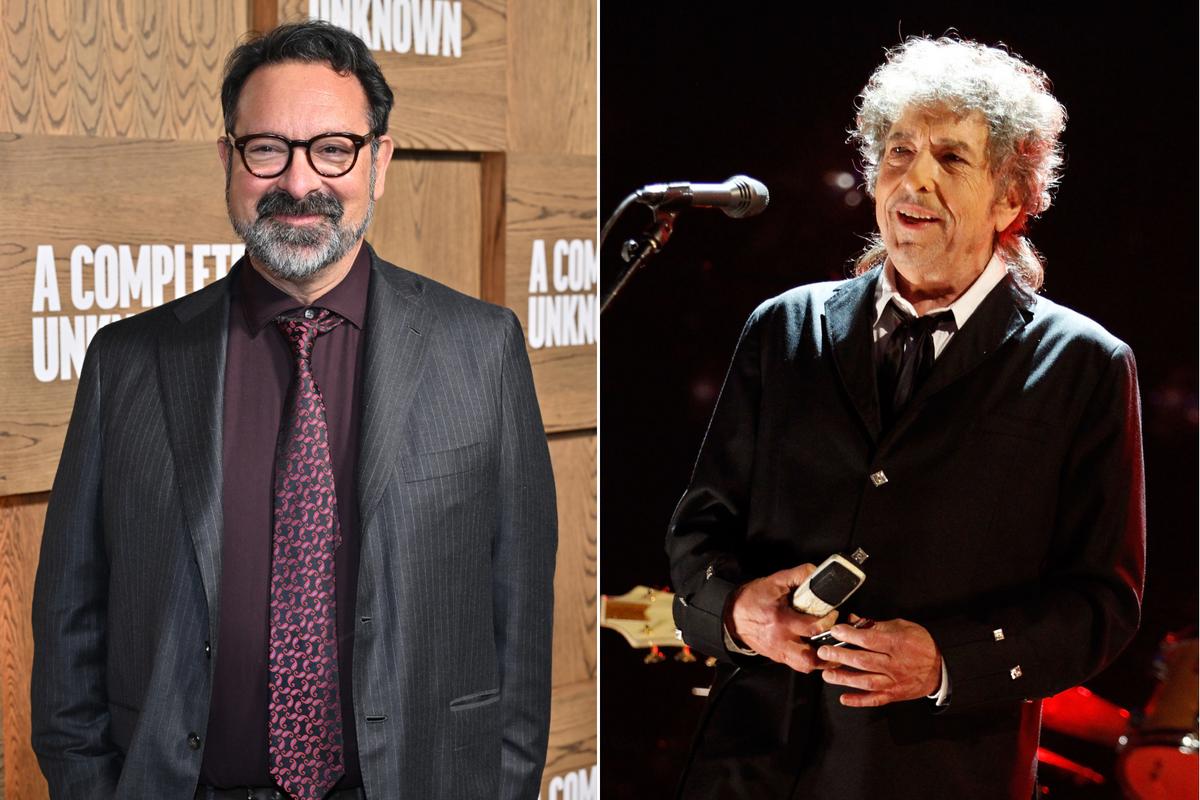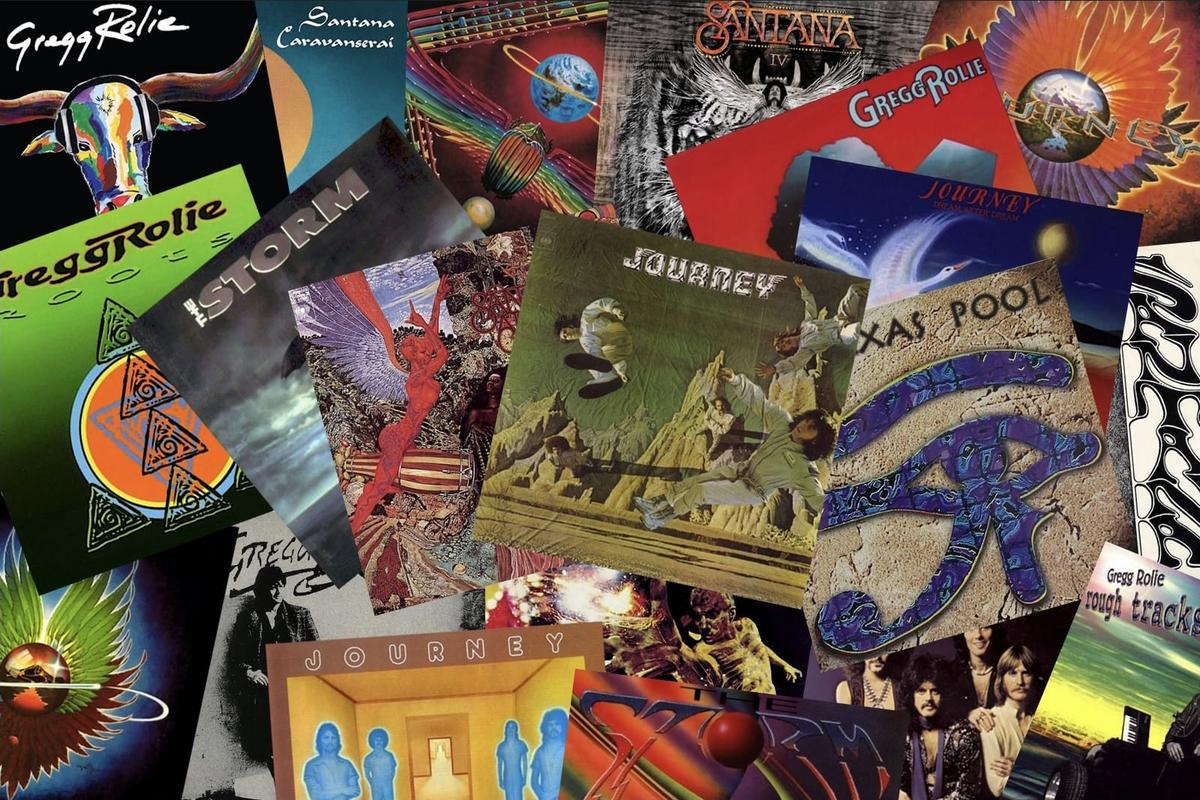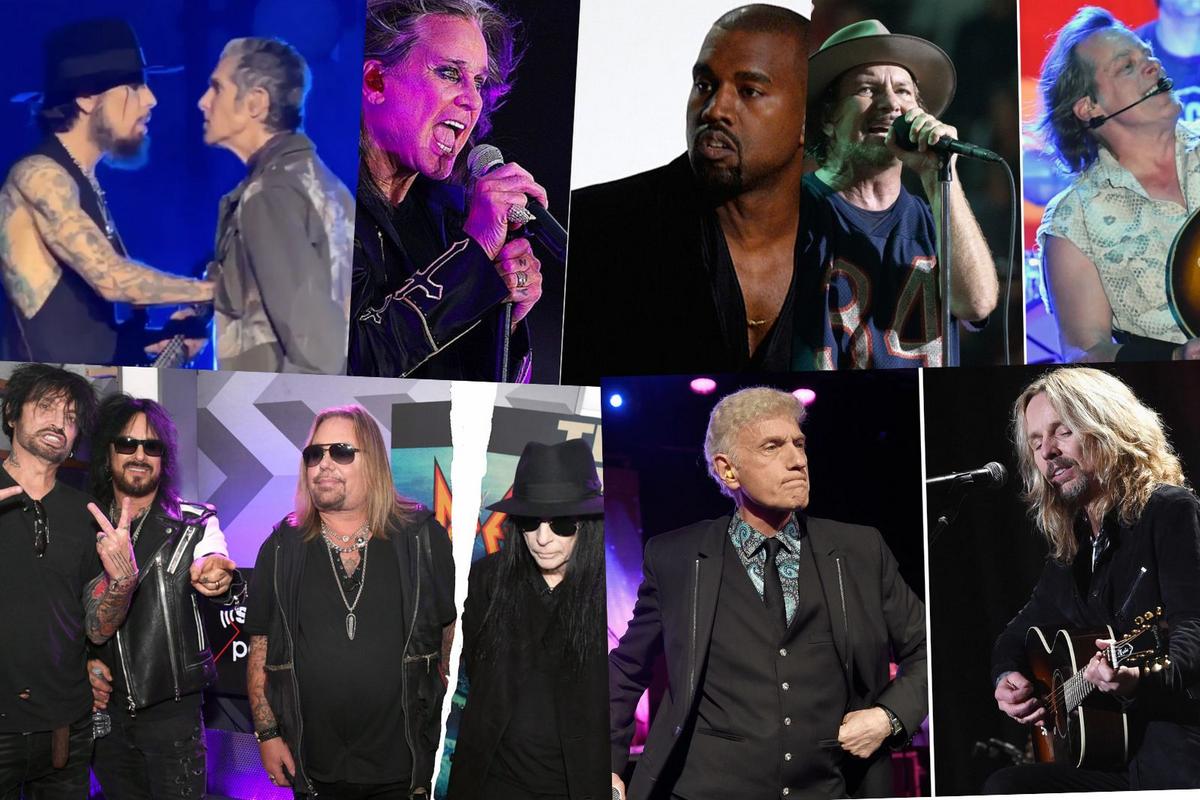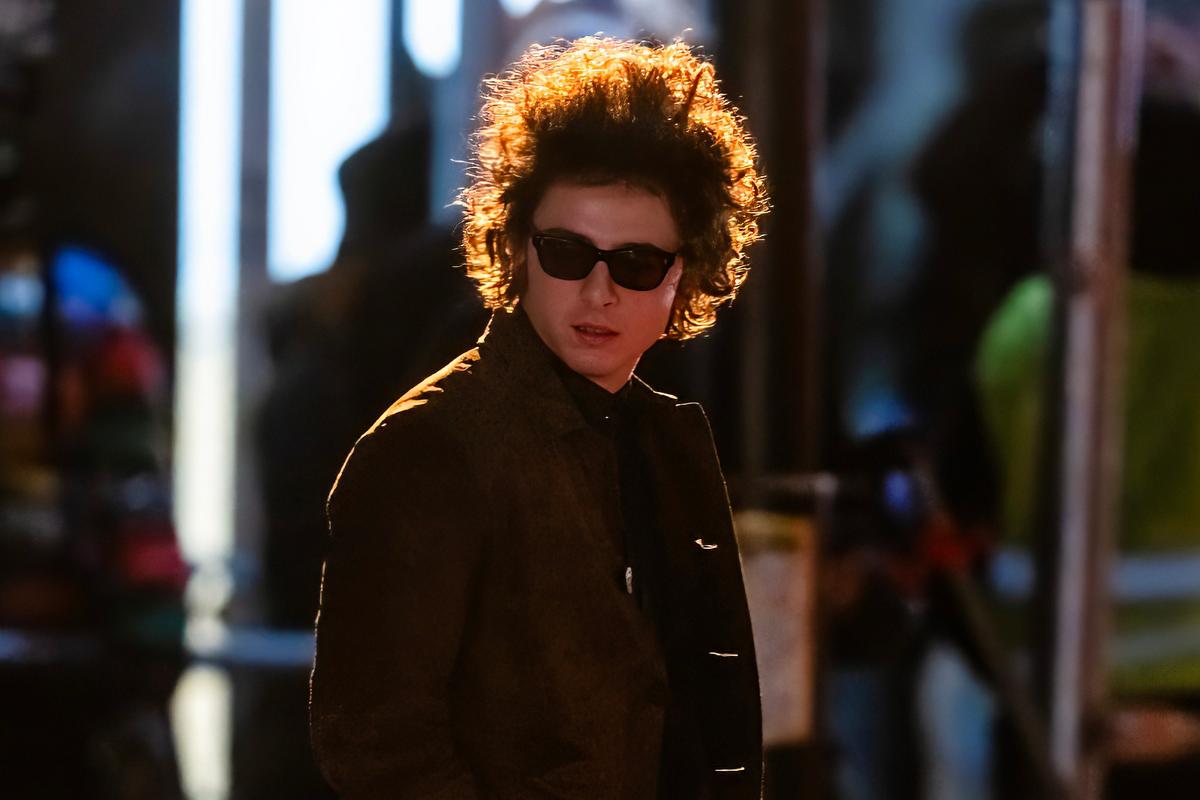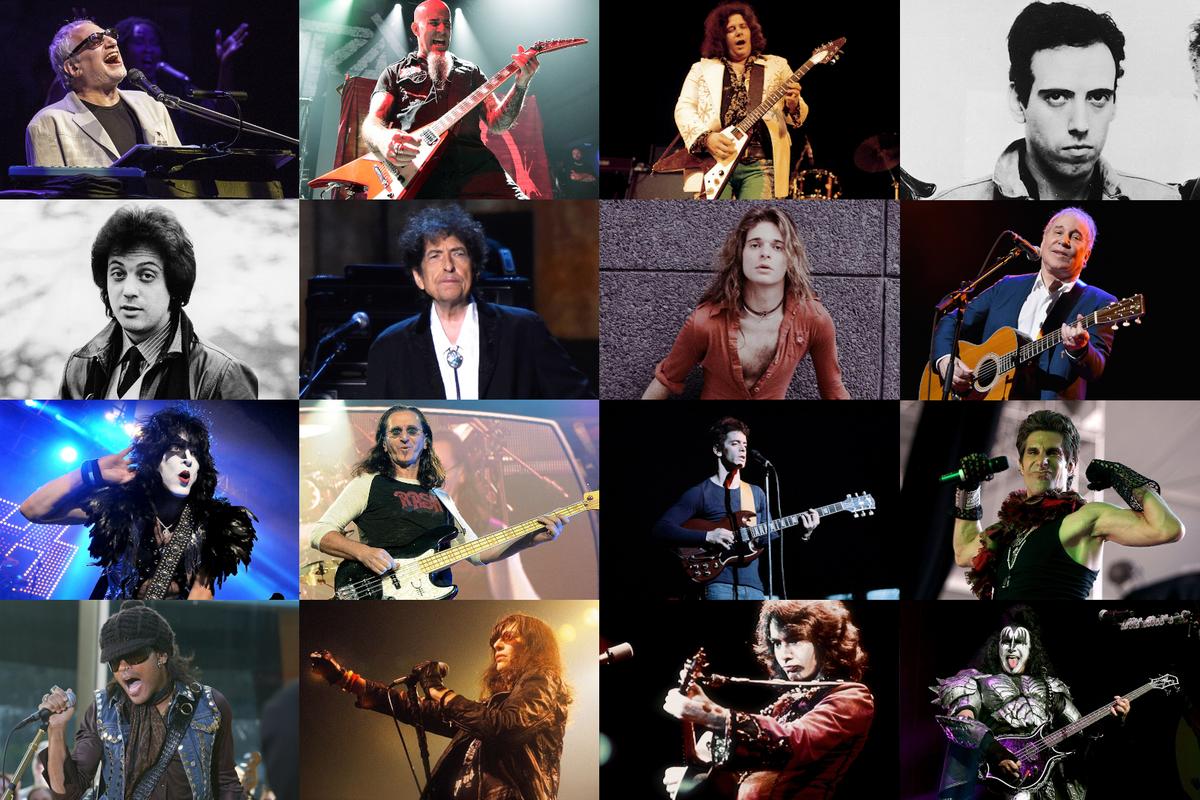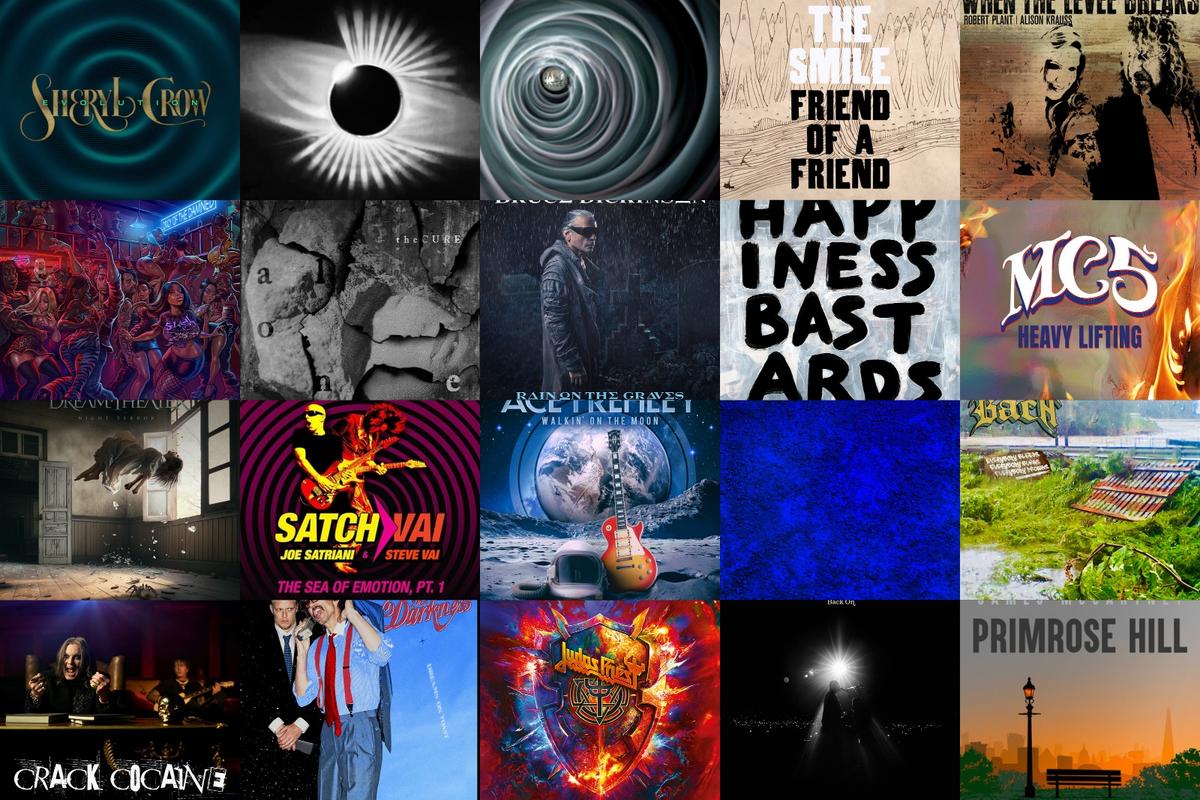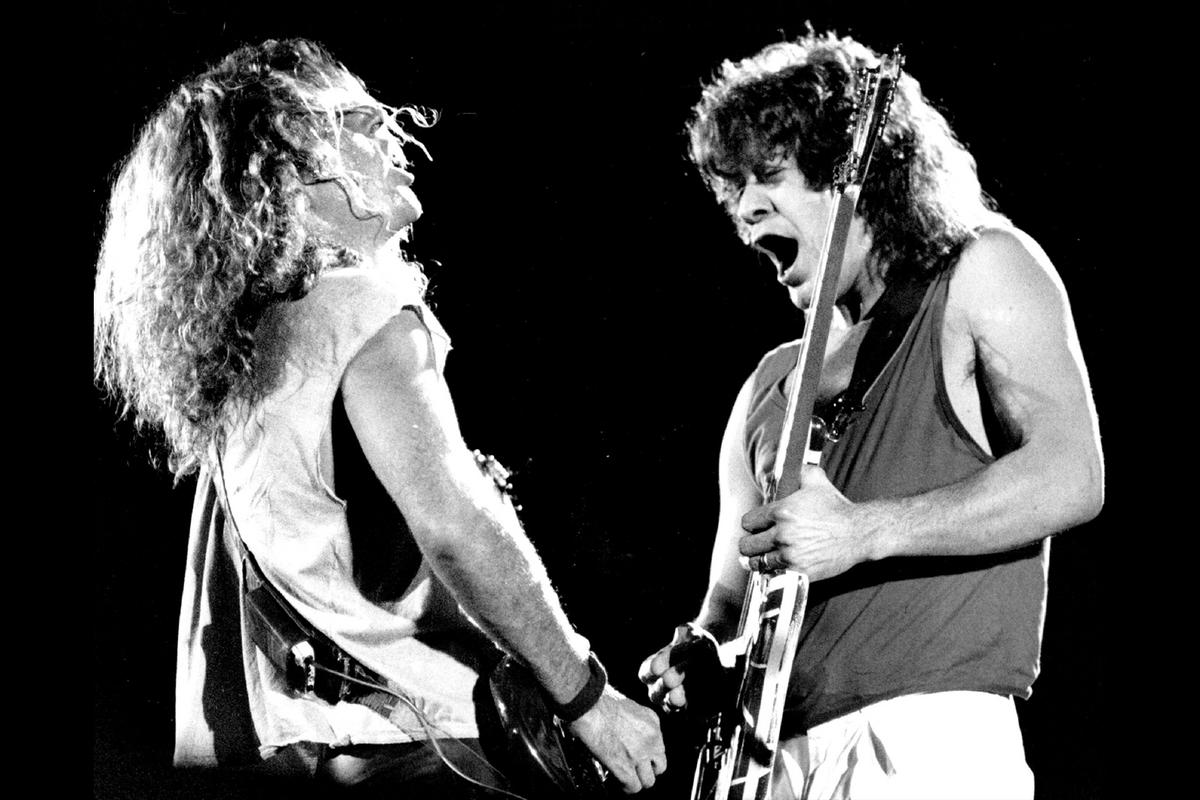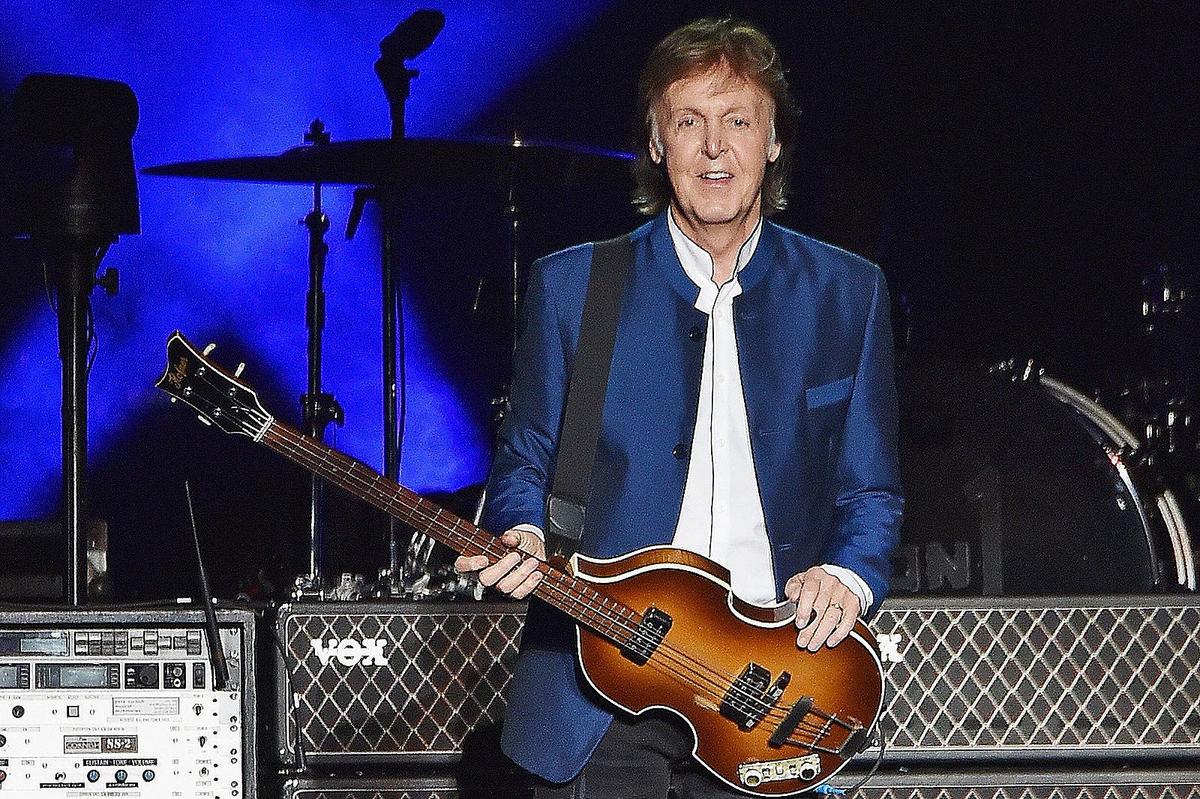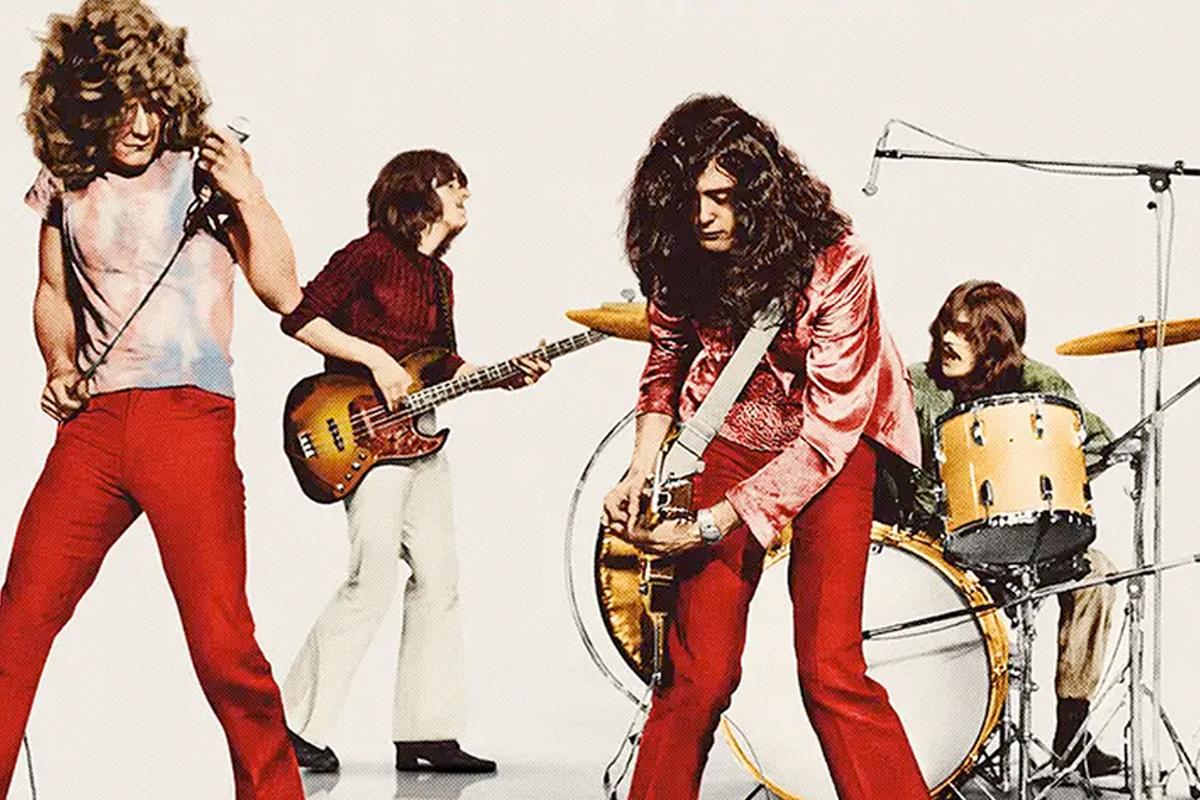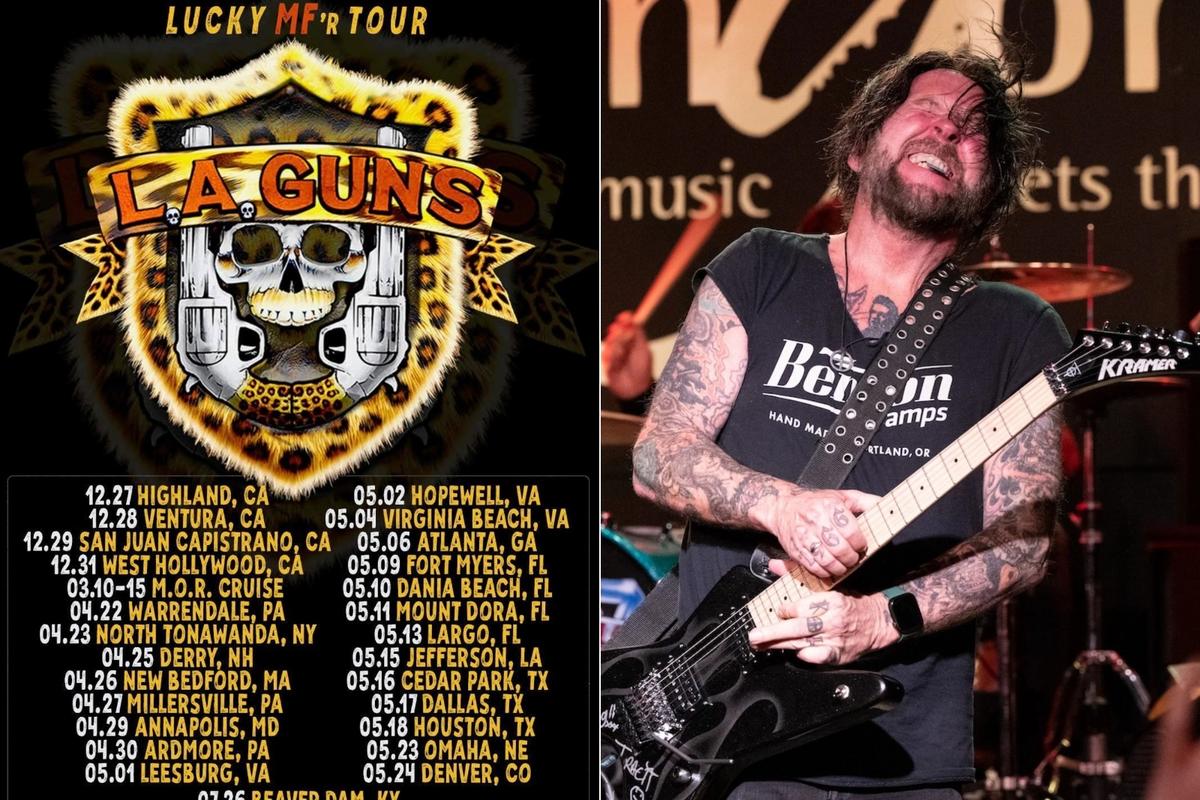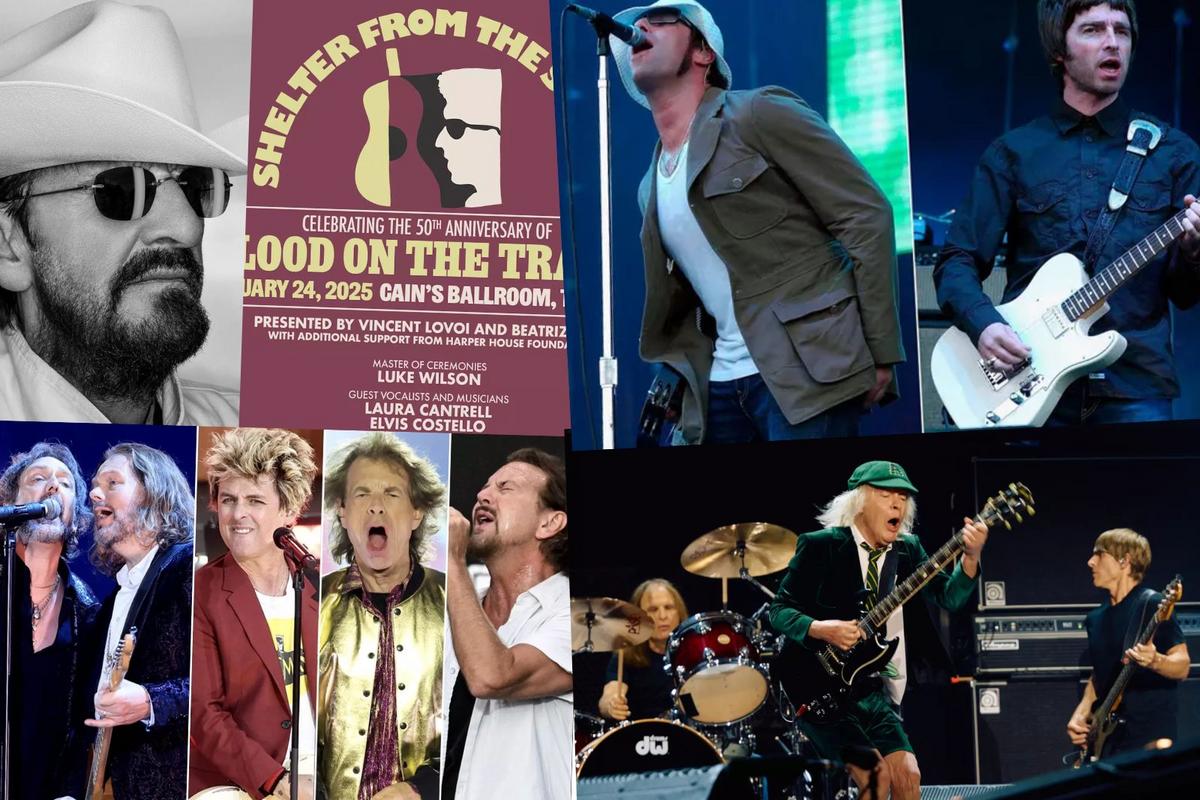In December 2024, Gene Simmons opined, quite matter-of-factly, that rock was dead. The artists comprising our Top 30 Rock Songs of 2024 would like a word.
As the year draws to a close, UCR looks back fondly on another 12 months of heavyweight rock songs that reaffirmed our faith in the genre. This year saw thundering releases from heavy metal juggernauts like Judas Priest and Bruce Dickinson; punchy blues-rock anthems from Jack White and Black Keys; heartfelt musings from Billy Joel and Stevie Nicks; and age-defying reunions from the Black Crowes and the Cure. And that’s just scratching the surface.
Read on to see our full list of the Top 30 Rock Songs of 2024.
30. James McCartney, “Primrose Hill”
From: Beautiful Nothing
James McCartney made waves when he revealed that he’d co-written “Primrose Hill” with Sean Ono Lennon — and indeed, the song’s wistful melancholy evokes the work of their fathers. The folk-tinged acoustic ballad tells a simple but poignant story of fond remembrance and heartsick longing. “You disappear forever / forever’s a long word / but never’s not long enough / to be loving you,” McCartney sings. It’s a turn of phrase most songwriters would kill to write — he learned from the best, after all.
29. Mike Campbell & the Dirty Knobs feat. Graham Nash, “Dare to Dream”
From: Vagabonds, Virgins & Misfits
After decades of serving as Tom Petty‘s right-hand man, former Heartbreakers guitarist Mike Campbell has spent his past three solo albums finding his own voice as a singer and bandleader. He sounds confident in his new role on “Dare to Dream,” a languid, quasi-psychedelic rocker full of droning guitar licks and Campbell’s nasally sneer, which sounds more than a little bit like his late partner’s. A guest vocal from Graham Nash further solidifies the song’s ’60s pop-rock bonafides.
28. The Darkness, “The Longest Kiss”
From: Dreams on Toast
The cheeky lead single off the Darkness’ 2025 album leans heavily on the band’s Queen affinity, full of crunchy guitar harmonies and rhythmic keys that give it a uniquely British pomp and stomp. Lead singer Justin Hawkins gives a relatively subdued vocal performance, showing off his well-rounded mid range while building anticipation for the head-voice histrionics that characterize the Darkness’ most iconic songs.
27. Joe Satriani and Steve Vai, “Sea of Emotion, Pt. 1”
It seems unbelievable that Joe Satriani and Steve Vai had never previously collaborated in the studio, but they make up for lost time on the sprawling “Sea of Emotion, Pt. 1.” Both guitar heroes keep the emphasis on melody and song structure, delivering a funky jam that’s crammed with mini-hooks at every turn. It makes the payoff even greater when they both cut loose with their characteristically dizzying and esoteric solos.
26. Little Feat and Bonnie Raitt, “Long Distance Call”
From: Long Distance Call
Little Feat’s swampy rendition of Muddy Waters’ blues staple is a combination of the familiar and the novel. The band extends its decades-long history of collaborations with Bonnie Raitt, who duets evocatively with classic-era percussionist Sam Clayton in his first-ever vocal turn. You’d never know it from his confident, gravelly, talk-sung performance — which, when combined with Scott Sharrard’s sizzling slide guitar, makes for a modern blues masterclass.
25. Melvins, “Working the Ditch”
From: Tarantula Heart
“Working the Ditch,” the lead single off Melvins’ 27th studio album Tarantula Heart, finds the group working in a mode that’s familiar if not exactly accessible. The band’s sludge-metal cacophony reaches new long-form, experimental heights across the LP, and “Ditch” is anchored by grinding, hypnotic riffs and Buzz Osborne’s gruff, repetitive chants. The dual-drum assault of Dale Crover and Roy Mayorga simultaneously adds density and looseness to their gurgling sonic stew.
24. Ozzy Osbourne, Billy Morrison and Steve Stevens, “Crack Cocaine”
From: The Morrison Project
Sure, you can take Billy Morrison at his word and read the lyrics to “Crack Cocaine” as a metaphor for a toxic love affair — but only if you can divorce the track from Ozzy Osbourne’s legendarily debauched history. However you interpret it, the song is a classic Ozzman stomper, full of chugging, Zakk Wylde-approved riffs and a furious solo from Morrison’s Billy Idol bandmate Steve Stevens. Osbourne sounds fierce and lucid as he bellows about a pastime that often made him behave in a less-than-dignified manner.
23. Billy Idol, “Best Way Out of Here”
From: Rebel Yell (Expanded Edition)
“Sounds like Steve [Stevens] was very influenced by Prince,” Billy Idol said when he unveiled “Best Way Out of Here,” a previously unreleased track from the Rebel Yell sessions. “It’s almost like a Prince backing track with Billy Idol singing.” Indeed, Stevens’ funky guitar licks and the song’s heavy synths evoke the Purple One and other new wave contemporaries, while Idol’s scat-sung vocals feel indebted to reggae — proof that the punk pinup was at his best when he embraced his pop instincts.
22. Dream Theater, “Night Terror”
From: Parasomnia
Dream Theater thrilled fans when they announced cofounding drummer Mike Portnoy’s return in 2023, and they assuaged any lingering doubts about rekindling their old spark with “Night Terror.” The 10-minute behemoth that previews 2025’s Parasomnia twists and turns with blistering precision, full of head-spinning guitar solos and time signatures that change on a dime. Portnoy lends to the prog-metal mayhem, but his punishing fills and slick grooves remind listeners that he’s a rocker at heart. It’s good to have him back.
21. Slash feat. Brian Johnson and Steven Tyler, “Killing Floor”
From: Orgy of the Damned
Twenty-five years after retiring Slash’s Blues Ball, the guitarist finally committed his love of the genre to record with his all-star covers album Orgy of the Damned. He’s squarely in his comfort zone on this cover of Howlin’ Wolf’s electric blues staple, ripping fast-and-loose solos and locking into an effortless groove with his bandmates. Brian Johnson delights with a soulful vocal showcasing his husky low register, and a guest harmonica performance from Steven Tyler adds extra grit and gravitas.
20. Sheryl Crow feat. Tom Morello, “Evolution”
From: Evolution
Sheryl Crow is still capable of the same effortless cool that shot her to stardom in the ’90s, but she tackles headier subject matter on “Evolution,” a moody rocker about the dangers of artificial intelligence left unchecked. As a 30-year music industry veteran, Crow’s confusion and dismay over hearing “a song that sounded like something I wrote” on the radio ring especially poignant. A futuristic solo from Tom Morello drives home the point that some eccentricities can’t be manufactured.
19. Eddie Vedder, “Room at the Top”
From: Bad Monkey soundtrack
Eddie Vedder had been covering Tom Petty and the Heartbreakers’ “Room at the Top” for years before releasing a studio version for Apple TV+’s Bad Monkey soundtrack. His affection for the late rocker is clear in his plaintive vocal, and Andrew Watt’s punchy production gives the track a more anthemic feel. This blend of melancholy and muscle is second nature to Vedder. With mentors like Petty, it’s easy to see why.
18. Ace Frehley, “Walkin’ on the Moon”
From: 10,000 Volts
On 10,000 Volts, Ace Frehley sticks largely to what he knows best: catchy, three-chord hard rock with a chewy pop center. “Walkin’ on the Moon” exemplifies this formula with its swaggering cowbell groove, gigantic power chords and a confident vocal performance from the Spaceman. Is this part of Frehley’s personal UFO testimony, or just a love letter to old-fashioned rock ‘n’ roll? Either way, it soars.
17. MC5 feat. Tom Morello, “Heavy Lifting”
From: Heavy Lifting
MC5 posthumously released Heavy Lifting a whopping 53 years after their sophomore album, 1971’s High Time. That massive gap explains why Wayne Kramer’s latest star-studded endeavor often bears little resemblance to the band’s glory days. Nevertheless, the late bandleader sounds invigorated across the project, especially the Tom Morello-assisted title track, a raucous slab of metallic funk that evokes the sound and fury of both collaborators’ heydays. A fitting farewell to one of rock’s undisputed heavyweights.
16. Bruce Dickinson, “Rain on the Graves”
From: The Mandrake Project
Far be it from Bruce Dickinson to take the path of least resistance. The Iron Maiden frontman’s first solo album in 19 years, The Mandrake Project, is another high-concept epic about abuse, identity, power struggles and the occult. Pre-release single “Rain on the Graves” combines Dickinson’s operatic vocals and tongue-in-cheek theatrics with muscular riffs and propulsive grooves. After all this time, he still sounds out for blood.
15. The Smashing Pumpkins, “Sighommi”
From: Aghori Mhori Mei
The Smashing Pumpkins’ catalog is a study in duality, alternating between explosive, metallic hard rock and shimmering, experimental art-pop. “Sighommi,” the lead single off Aghori Mhori Mei, lands in the former category, full of lithe grooves and bone-crunching guitar chugs. Billy Corgan‘s melodic sneer is the cherry on top, giving “Sighommi” an intangible sense of longing even as its guitars crash like waves against the rocky shore.
14. Mark Knopfler, “Ahead of the Game”
From: One Deep River
Mark Knopfler conquered the globe decades ago with Dire Straits, but on “Ahead of the Game,” he makes playing in the noisy back room of the neighborhood pub sound like the most glorious endeavor in the world. The singer and guitarist delivers his tried-and-true strand of laidback pop-rock, slick but far from sterile, as he sprinkles in blues and country licks with effortless panache. “We’re worn out and weary, all of us / But we know why we came,” Knopfler croons, sounding like a man who knows some cosmic secret the rest of us are still trying to figure out.
13. Billy Joel, “Turn the Lights Back On”
Non-album single
Billy Joel abandoned pop music after 1993’s River of Dreams, convinced he had nothing left to say. Thirty-one years later, he returned with “Turn the Lights Back On,” a reflective piano ballad on which he openly wonders if he’s missed his window of opportunity. The song captures Joel in classic ’70s balladeering mode, his voice weathered but still robust. The rapturous reception to the song’s live debut at the 2024 Grammys squashed any doubts whether the public would still embrace him.
12. Stevie Nicks, “The Lighthouse”
Non-album single
Stevie Nicks wrote “The Lighthouse” shortly after Roe v. Wade was overturned, feeling compelled “to stand up for the women of the United States and their daughters and granddaughters — and the men that love them.” It’s a rally call from the jump, with Nicks exhorting women to embrace their scars and never let the villains of the world strip them of their power. She sounds warm and inviting in the verses, a kindred spirit and nurturer. But when the chorus kicks in, a switch flips: She becomes a warrior and protector, imploring listeners to “see the future and get mad.” Hell hath no fury like a rock goddess scorned.
11. Sebastian Bach, “Everybody Bleeds”
From: Child Within the Man
The titles of “Everybody Bleeds” and accompanying album Child Within the Man suggest that Sebastian Bach has gained some hard-earned wisdom and a fresh perspective. But don’t think for a second that the former Skid Row frontman has softened with age. “Everybody Bleeds” is a bludgeoning metal anthem, packed with catchy riffs, titanic drums and Bach’s full-throttle screams. If everybody bleeds, burns and drowns in the end, Bach sounds determined to go down swinging.
10. The Smile, “Friend of a Friend”
From: Wall of Eyes
Is it a copout to say “Friend of a Friend” sounds positively Beatlesque? The Radiohead offshoot did record its sophomore album at Abbey Road Studios, and the album’s third single is a twisting art-rock odyssey, anchored by Tom Skinner’s lithe drumming and Thom Yorke’s lilting vocals. The lyrics were inspired by footage of Italian people singing on their balconies during the COVID-19 lockdowns; the climactic string swells offer a cathartic rebuke to the fear and isolation wrought by the pandemic. Yet “Friend of a Friend” ends on a note of uncertainty — a warning against complacency and an interrogation of who benefits in times of global crisis.
9. Pearl Jam, “Dark Matter”
From: Dark Matter
The title track to Pearl Jam’s 12th album goes straight for the jugular with martial percussion, fist-pumping riffs and savage call-and-response vocals from Eddie Vedder. It’s a sweaty, breathless performance that harks back to the band’s mid-’90s heyday. Producer Andrew Watt gives the song a modern, gut-punching sheen, and Mike McCready’s scorching guitar solo proves the alt-rock giants have lost none of their bite.
8. The Black Keys, “Beautiful People (Stay High)”
From: Ohio Players
The Black Keys’ Dan Auerbach and Patrick Carney long ago dropped the pretense of operating as a duo, and “Beautiful People (Stay High)” sounds like a big-budget alt-rock anthem befitting its seven credited co-writers, most notably Beck. That’s not necessarily a bad thing: The “na na na” backing vocals and auxiliary brass and keyboard contributions elevate the song’s funky blues-rock strut. It may not be a literal arena-sized banger, but it’s the work of a band that proudly busted out of the garage a long time ago.
7. Robert Plant and Alison Krauss, “When the Levee Breaks”
Non-album single
Few classic rock titans have figured out how to reinvent their old songs as effectively as Robert Plant. Together with Alison Krauss, the former Led Zeppelin frontman offers another take on the Memphis Minnie blues tune, reimagining it as an exotic, elemental dirge. Plant’s husky vocals lend an air of desperation to the performance, while Krauss’ evocative violin work nods briefly to Zeppelin’s “Friends” before propelling the song to a climactic rootsy stomp.
6. Green Day, “1981”
From: Saviors
Ever since 2004’s American Idiot revitalized their career, Green Day has fought (and often succumbed to) the temptation to turn every project into a massively ambitious undertaking. Even Saviors was touted as their long-awaited reunion with longtime producer Rob Cavallo, and the third installment in a spiritual trilogy also comprising Dookie and American Idiot. Thankfully, Green Day tamps down these outsize urges on the brash “1981,” a back-to-basics punk anthem full of blunt-force power chords and singalong choruses. It’s Green Day just like you remember them — one version, at least.
5. David Gilmour, “The Piper’s Call”
From: Luck and Strange
“The Piper’s Call” is a cautionary tale about the perils of fame from somebody who’s spent more than half a century keeping the hounds at bay. The contemplative track begins with delicate acoustic guitar strums and a hushed vocal from David Gilmour, who warns that you “can’t undo the voodoo that you do” and implores listeners to “steer clear of snakes.” The song builds gradually and climaxes with a smoldering guitar solo — the proverbial North Star that’s always righted Gilmour when the industry threatened to lead him astray.
4. Judas Priest, “The Serpent and the King”
From: Invincible Shield
If you want progressive grandeur or epic balladry, there are plenty of songs in Judas Priest’s catalog to satiate your appetite. “The Serpent and the King” is not one of them. The Metal Gods serve four-and-a-half minutes of unadulterated, ass-kicking heavy metal, anchored by rapid-fire riffs, double-kick drum commotion and Rob Halford‘s siren-like wail. It’s an epic story of good versus evil, delivered with the venom of the serpent and the authority of the king.
3. Jack White, “That’s How I’m Feeling”
From: No Name
Jack White soared to stardom as a blues-rock revivalist, but his real superpower has always been his ability to imbue these garage-rock rave-ups with unabashed pop hooks. Case in point: “That’s How I’m Feeling,” the lead single off his guerilla-released No Name. White’s feral yelp cuts through the jagged guitars, but the loud-soft dynamics and dance floor-ready beat give it an irresistible earworm quality. White has no business sounding this vital 25 years after the White Stripes released their debut album. But we’re not complaining.
2. The Black Crowes, “Wanting and Waiting”
From: Happiness Bastards
There’s something exhilarating about a couple of seasoned professionals picking up right where they left off and sounding no worse for wear. That’s the case on “Wanting and Waiting,” the lead single off Happiness Bastards, the Black Crowes’ first studio album in 15 years. Brothers Chris and Rich Robinson serve up their patented blues-rock boogie with soul and swagger, combining sassy vocals and sizzling riffs with smoky keyboard flourishes and poppy hand claps. Fellas, we beg you: Don’t leave us wanting and waiting for another 15 years.
1. The Cure, “Alone”
From: Songs of a Lost World
The Cure’s first album in 16 years takes its time getting started. “This is the end of every song that we sing,” Robert Smith croons three and a half minutes into opening track and lead single “Alone.” It’s a majestic and introspective slow burn, teeing up an album that simultaneously sums up the band’s career while also pushing them into uncharted territory. Smith summons a “broken-voiced lament to call us home,” but at 65, he sounds as yearning and powerful as ever.
Top 25 Rock Albums of 2024
Once again, reports of the genre’s death have been greatly exaggerated.
Gallery Credit: Michael Gallucci
